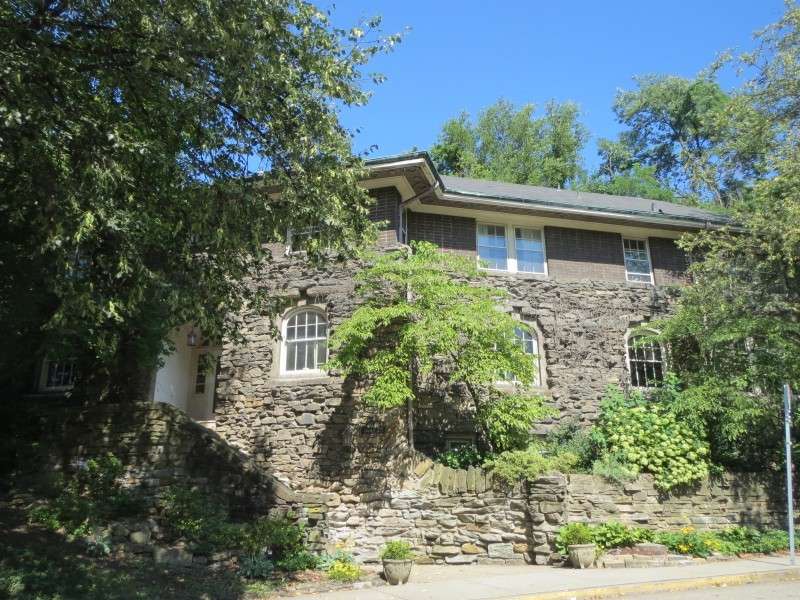Oakland is a neighborhood in Pittsburgh, about three miles east of Downtown. The neighborhood is Pennsylvania's third-largest economic center, after Center City Philadelphia and Downtown Pittsburgh.
Oakland was originally a township, and was annexed by Pittsburgh in 1868. Oakland was fallow until 1890, when Mary Schenley donated 400 acres for Schenley Park. Almost immediately, the neighborhood became a center for cultural, social, and educational amenities. Real estate developer Franklin Felix Nicola had a vision of a civic center with residential areas adjacent to it. His plan was largely realized, with cultural institutions brought in or created, resulting in one of the better City Beautiful environments in the US.
Part of this civic center plan involved the University of Pittsburgh. The university's new campus was originally going to be an academic Acropolis on the top of the hill, around where University Drive and Allequippa Street snake around the hillside today. Some buildings in this plan were constructed, but the school's campus eventually was primarily located around what is now Schenley Plaza after land was bought in 1907.
Today, Oakland is still the cultural center of Pittsburgh, with almost all institutions remaining in the neighborhood. Additionally, Oakland is the home of the University of Pittsburgh Medical Center, ranked as one of the best hospitals in the United States. The Medical Center is also a premier research facility, with notable individuals such as Jonas Salk, who developed the polio vaccine, working there. UPMC has been a driver in Pittsburgh's rebounding economy.
Oakland is most famous for being the location of the University of Pittsburgh.
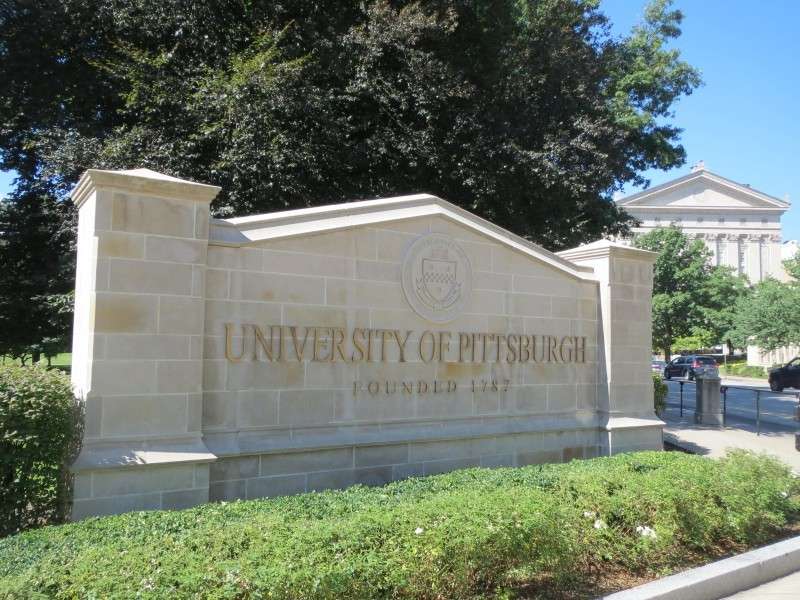
The most prominent building in Oakland is the Cathedral of Learning, the main building of the University of Pittsburgh.
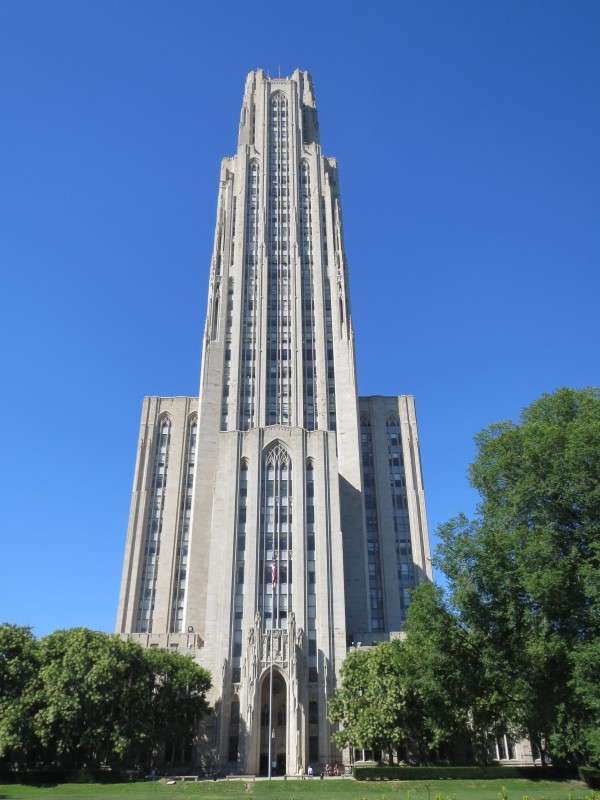
The Cathedral of Learning is located on a city block surrounded by Bigelow Boulevard, Fifth Avenue, Bellefield Avenue, and Forbes Avenue.
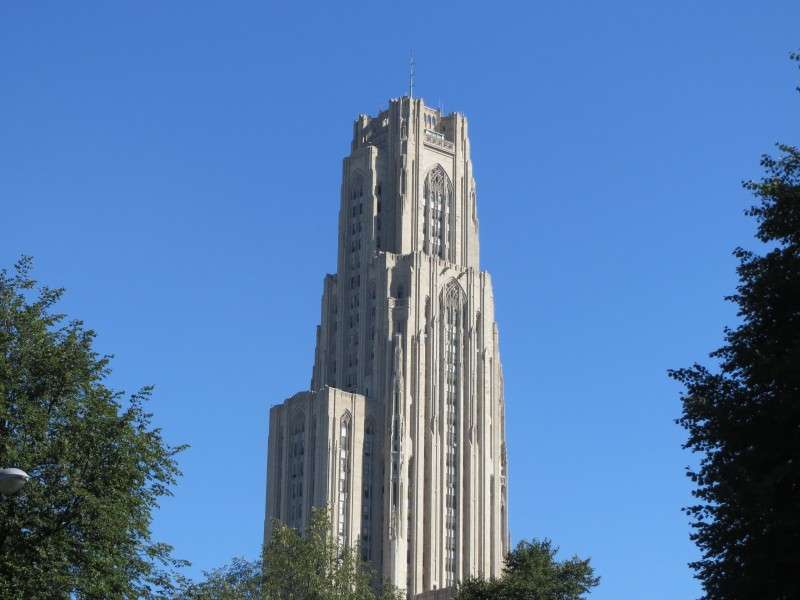
The Cathedral of Learning is 535 feet tall, and was dedicated in 1937.
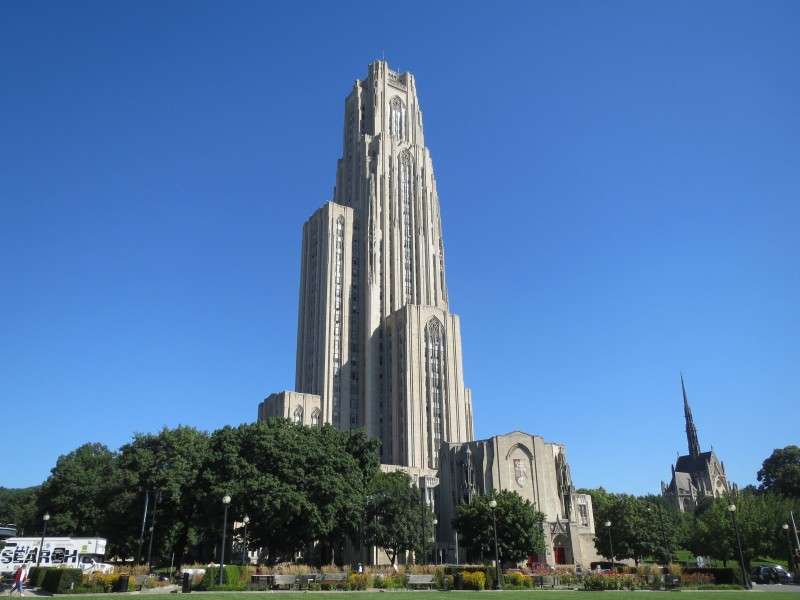
The skyscraper's tower was completed in 1940.
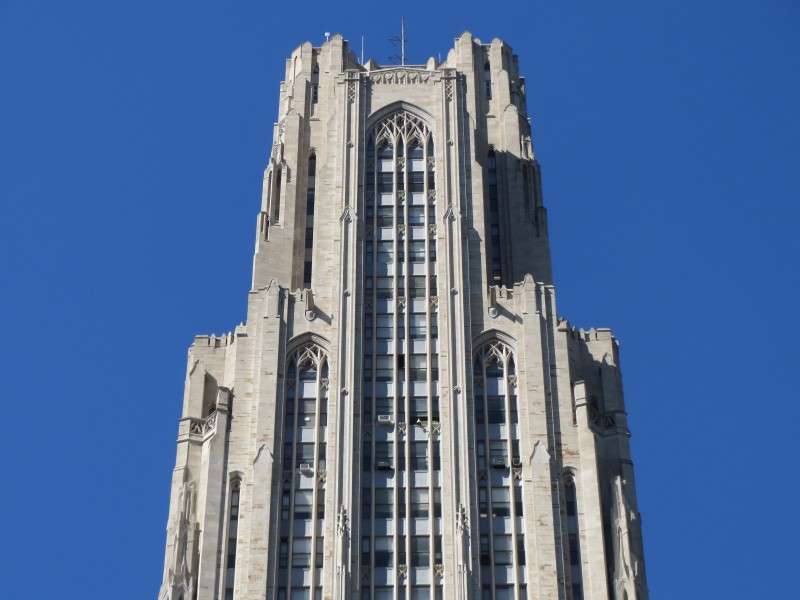
The idea of the tallest building in the world for the Cathedral was considered in the early planning stages of the building.
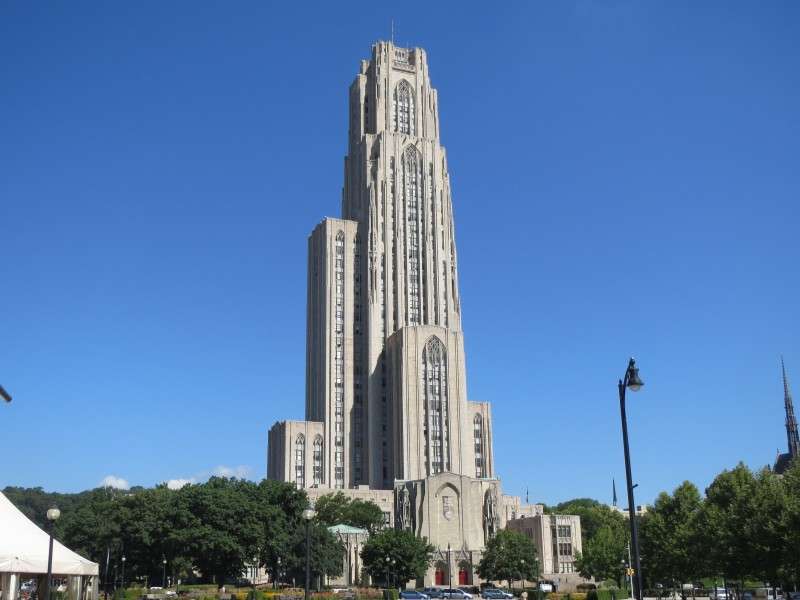
Although the world's tallest building was not accepted, the skyscraper was planned to house all academic departments, and was to also be a symbolic rival to Downtown Pittsburgh.
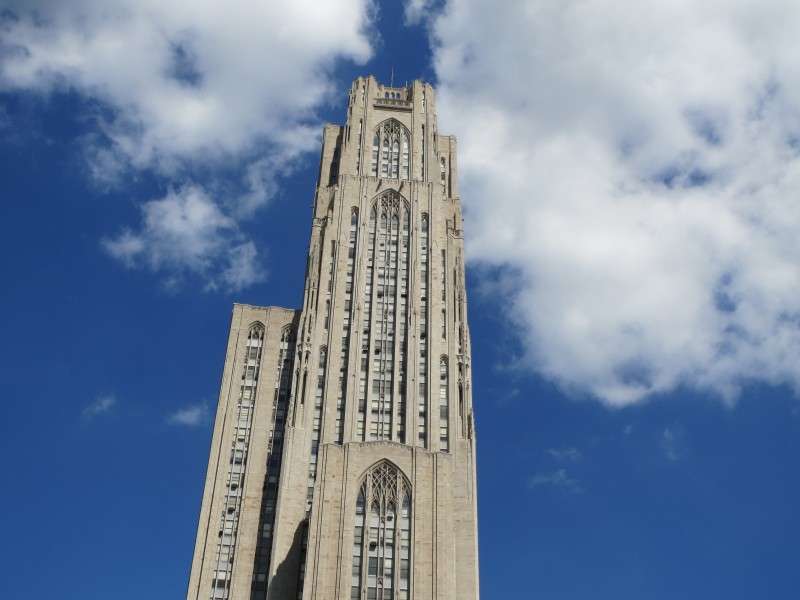
The main room upon entering the building is the Commons Room, which is a lobby four stories high.
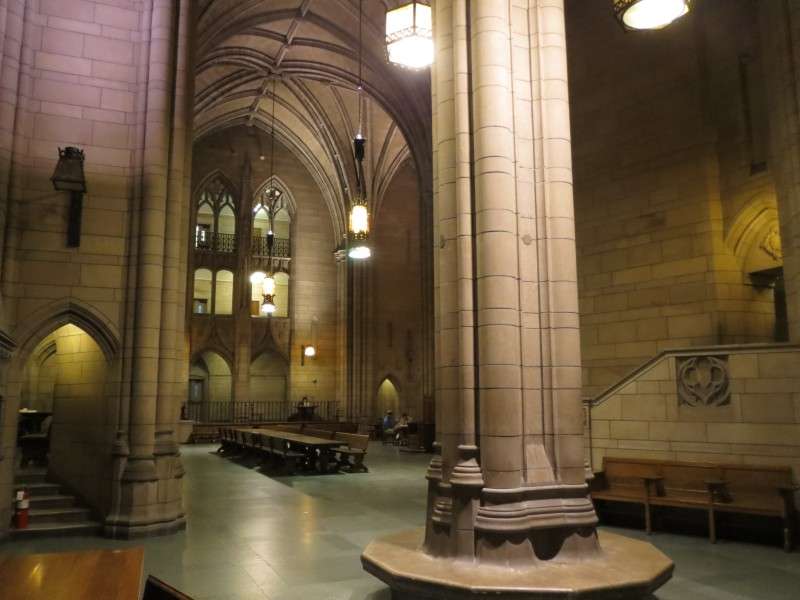
The Commons Room is a true Gothic room, with no steel supports used in the arches.

The room was a gift from Andrew Mellon.
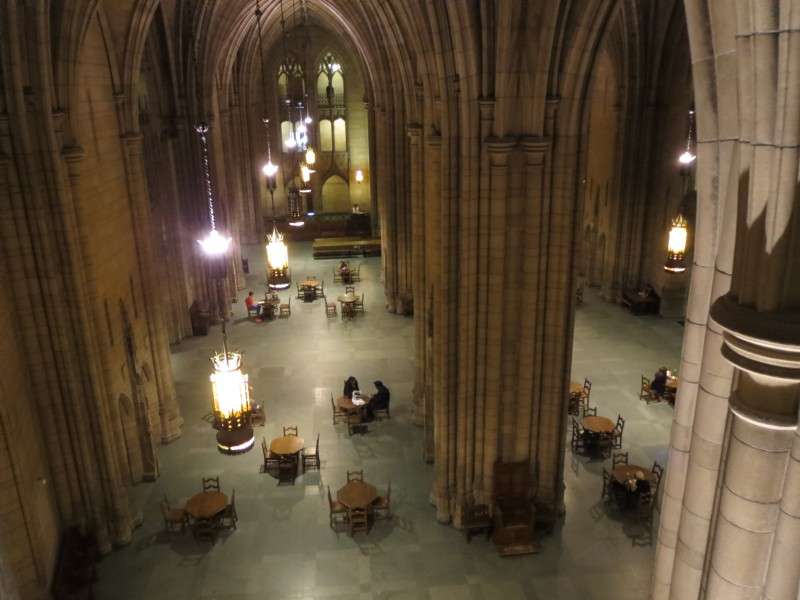
The Commons Room provides access to some of the 29 Nationality Rooms, and all of the Nationality Rooms open into hallways with views of the Commons Room.
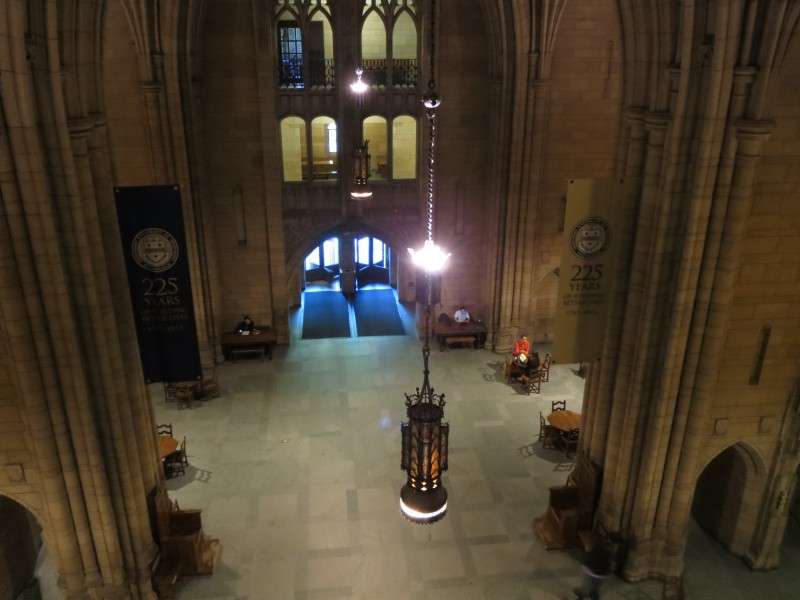
The Turkish Classroom, on the third floor. The room is similar to that of the main room in a typical Turkish house.

The Turkish Classroom is one of the newest classrooms, dedicated in March 2012.

The Israel Heritage Classroom, on the third floor. The room was dedicated in 1987. The benches are modeled after those in the 3rd-century synagogue of Capernaum.
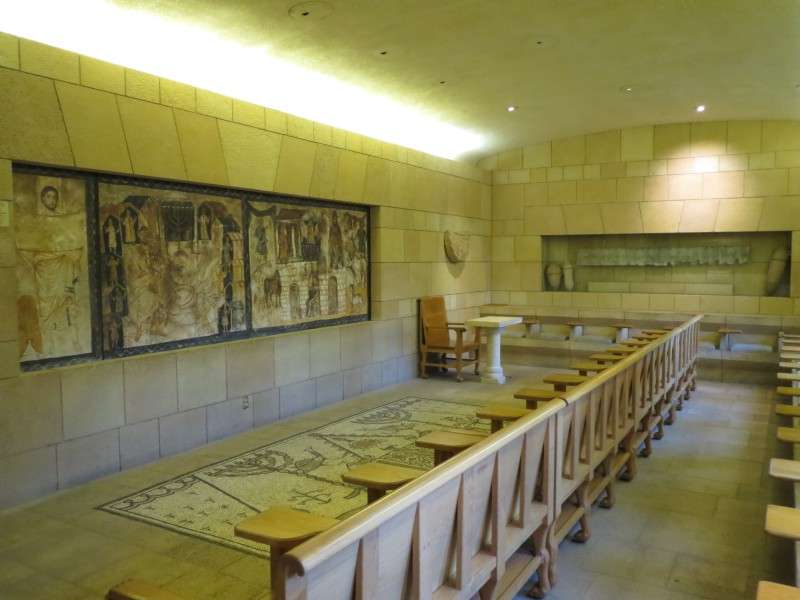
The African Heritage Classroom, on the third floor. The room was dedicated in 1989, and pays tribute to the entire African continent, and several ancient kingdoms of Africa.
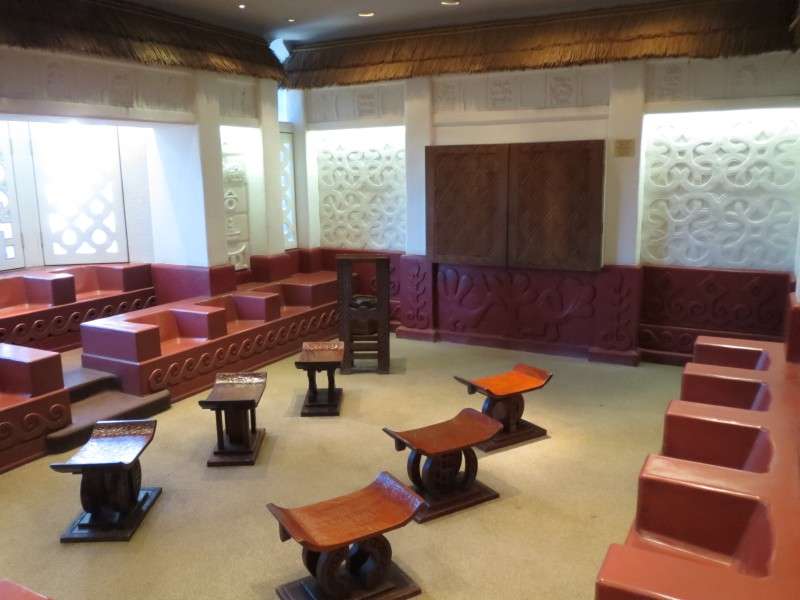
The Early American Classroom, on the third floor. It was dedicated in 1938. The classroom was originally planned as part of a series of Pennsylvania classrooms, which would showcase pioneering groups throughout the state on the second floor.
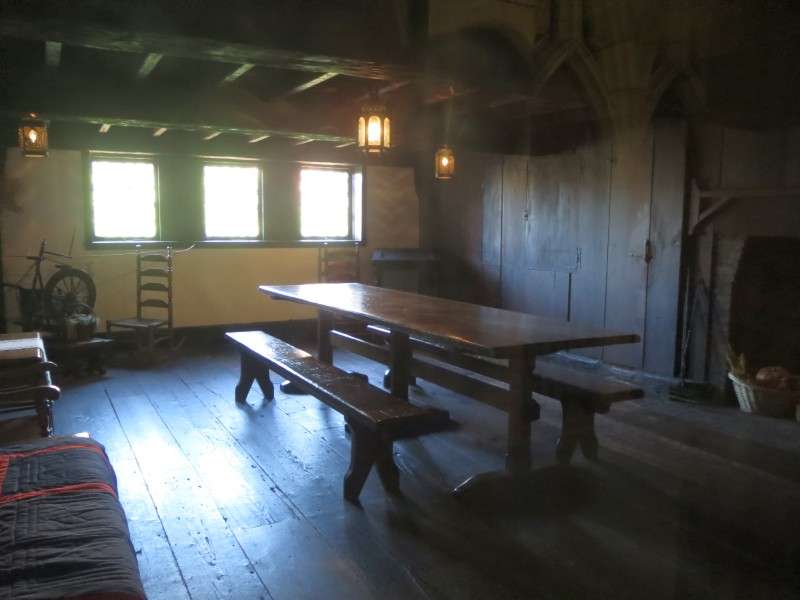
The Indian Classroom, on the third floor. The room was dedicated in 2000, and is modeled after a 4th-9th century courtyard at Nalanda University.
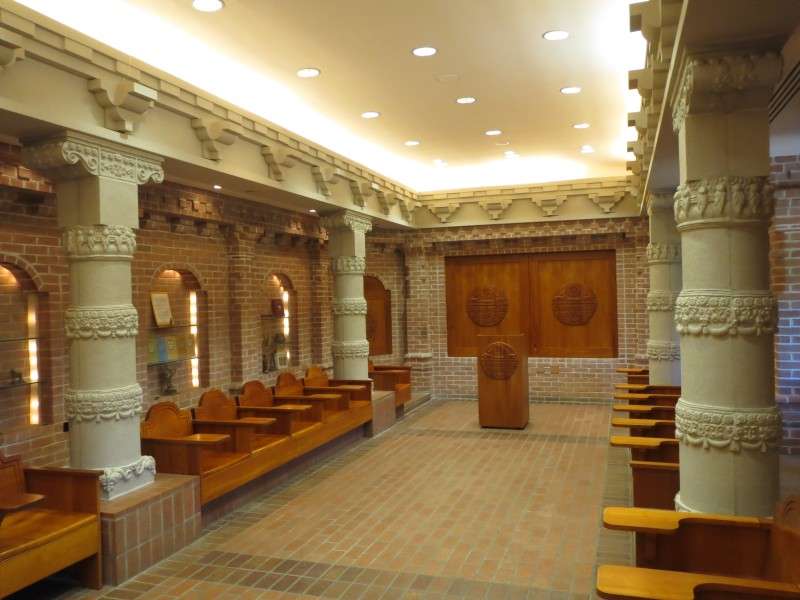
The Swiss Classroom, on the third floor. The room was dedicated on April 22, 2012, and is the newest Nationality room at the Cathedral. The room is similar to one from Fraumunster Abbey dating back to the 15th century.
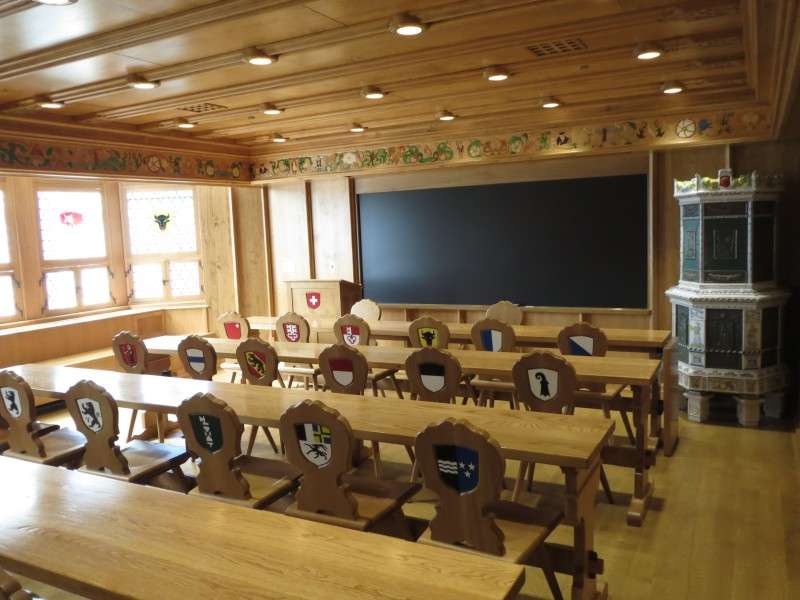
The Armenian Classroom, on the third floor. The classroom was dedicated in 1988, and was inspired by the monastery of Sanahin.
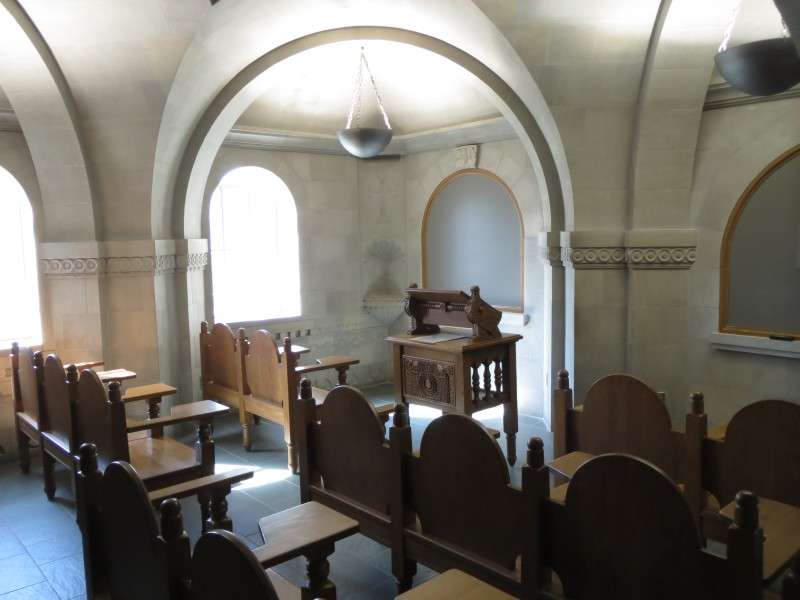
The Japanese Classroom, on the third floor. The room was dedicated in 1999, and represents a room in a 1700s vernacular house for farmers, merchants, or artisans.
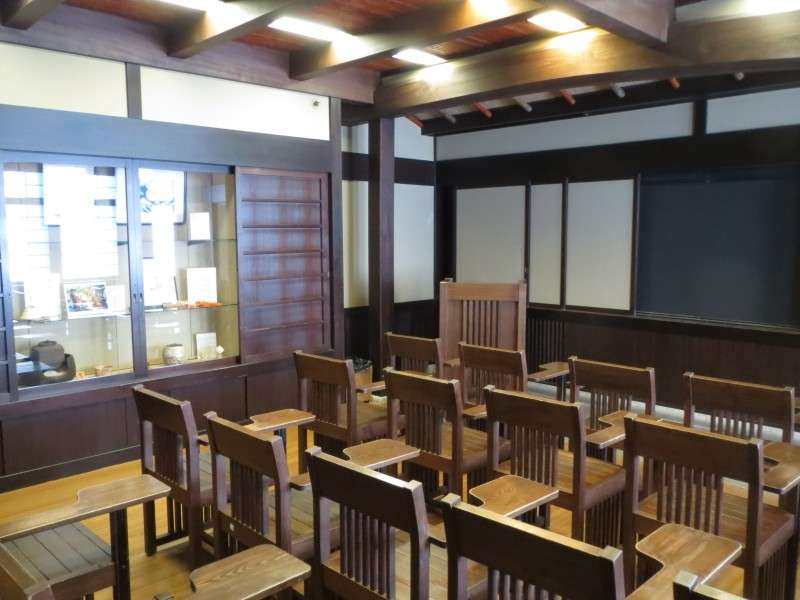
The Austrian Classroom, on the third floor. The classroom was dedicated in 1996, and takes elements from the 18th-century Austrian Empire, including the Schloss Esterhazy palace.
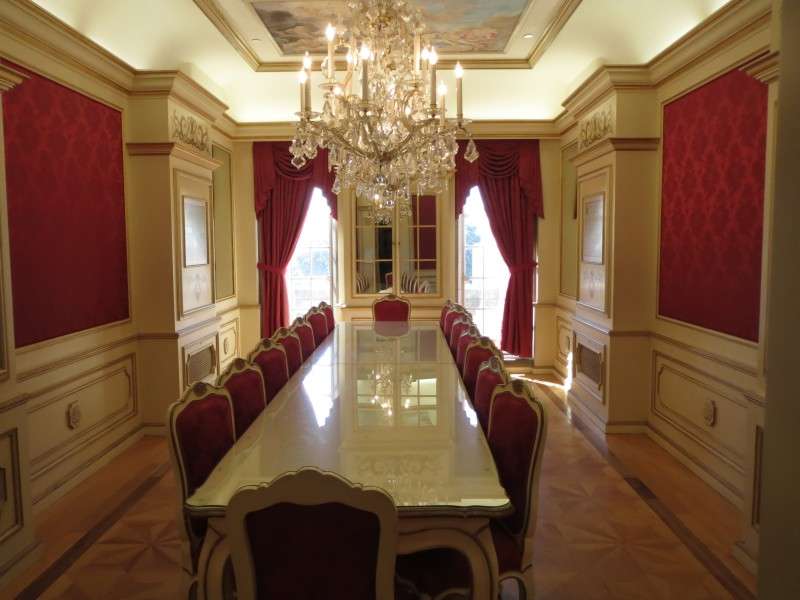
The Welsh Classroom, on the third floor. The room was dedicated in 2008, making it one of the newest classrooms, although it was planned since 1939.
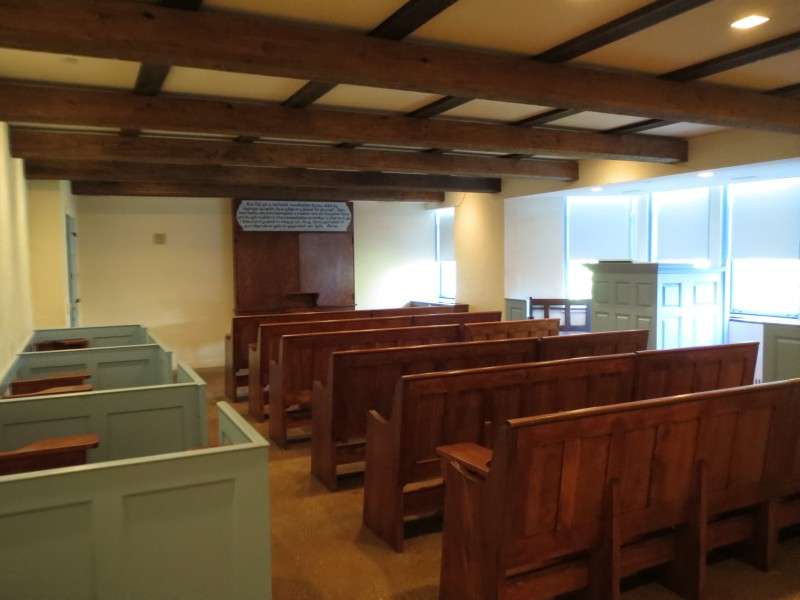
The Welsh Classroom depicts a Non-Conformist chapel from the 1700s, when English was mandated as the official language of Wales. Congregations met to worship in their Welsh language in barns or houses, where ministers lived in the quarters.
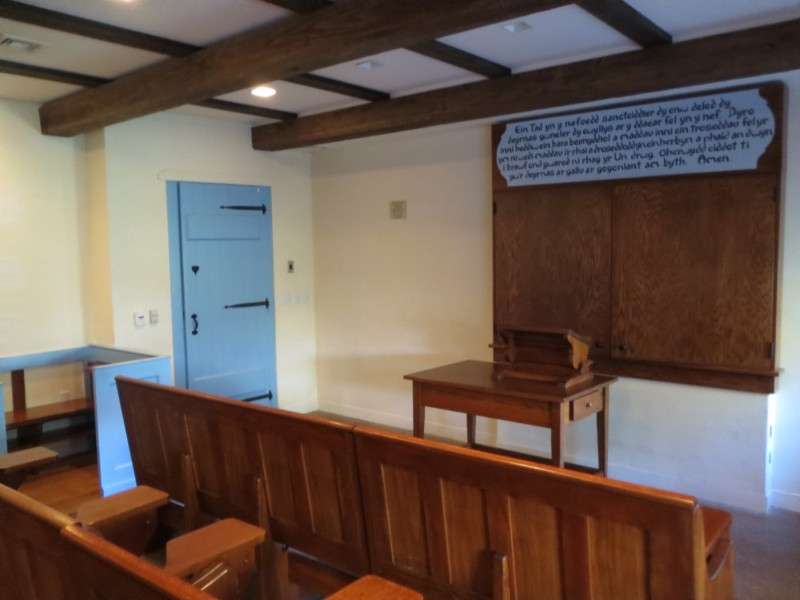
The Ukrainian Classroom, on the third floor. The room was dedicated in 1990.
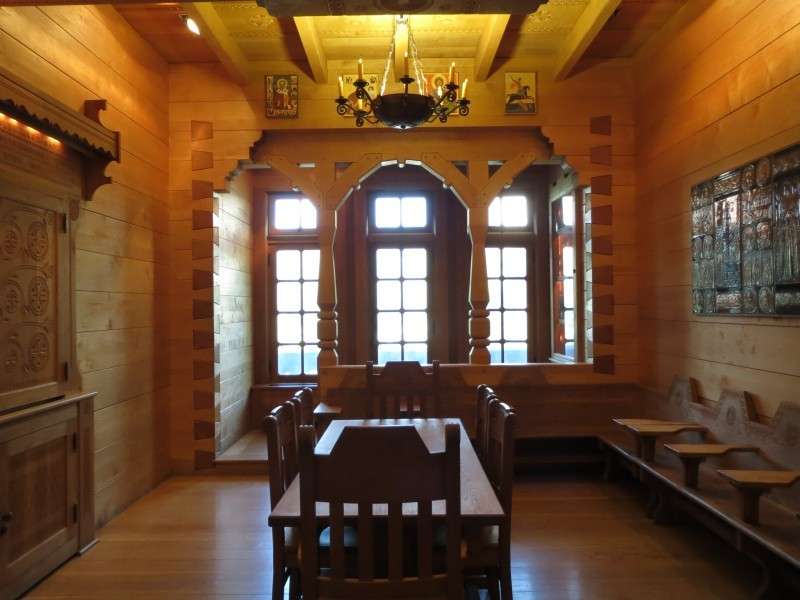
The Ukrainian Classroom is meant to look like a nobleman's reception room. Doors for the chalkboard on the left depict the Tree of Life.
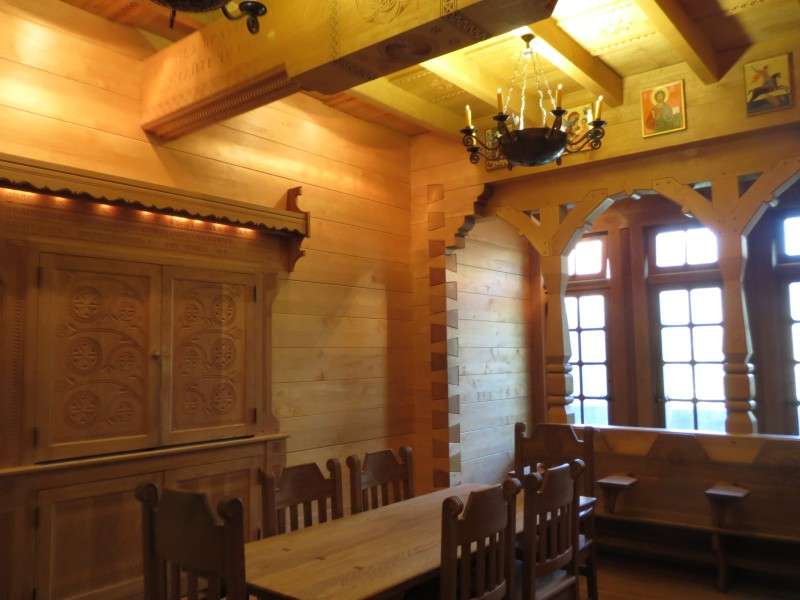
The Frick Auditorium, on the third floor.

Some rooms in the Cathedral of Learning, even on the lower floors, are typical classrooms.
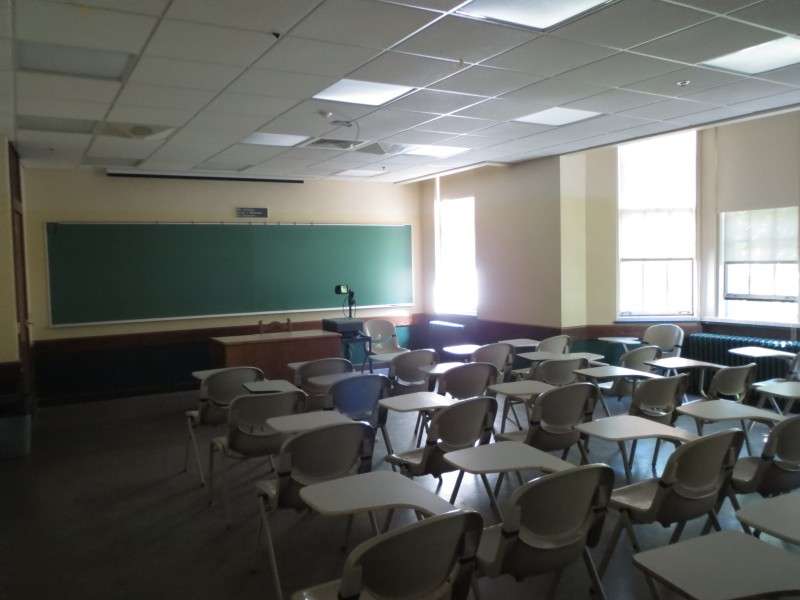
To the northeast of the Cathedral of Learning, across a lawn, is Heinz Chapel.
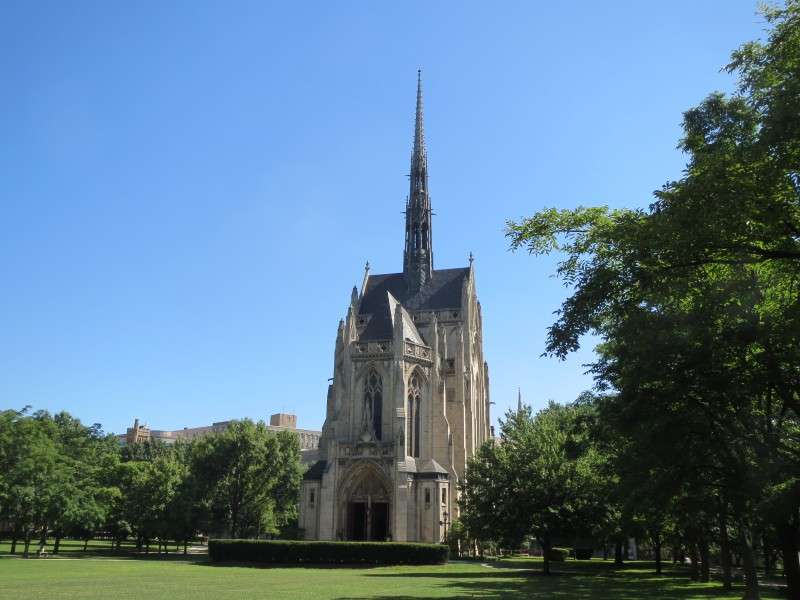
Heinz Chapel was modeled after Sainte-Chapelle in Paris, and also alludes to Mont-St.-Michel and St.-Maclou in Rouen.
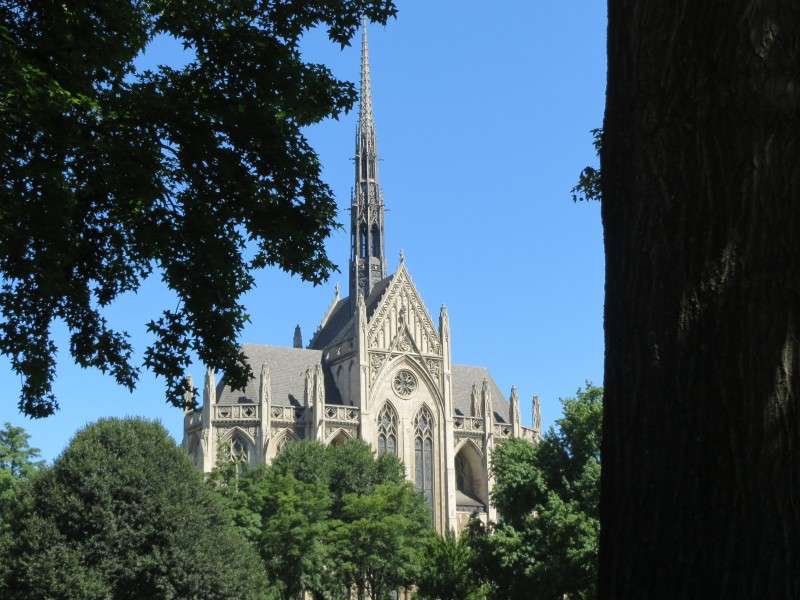
The non-denominational chapel was built in 1938.
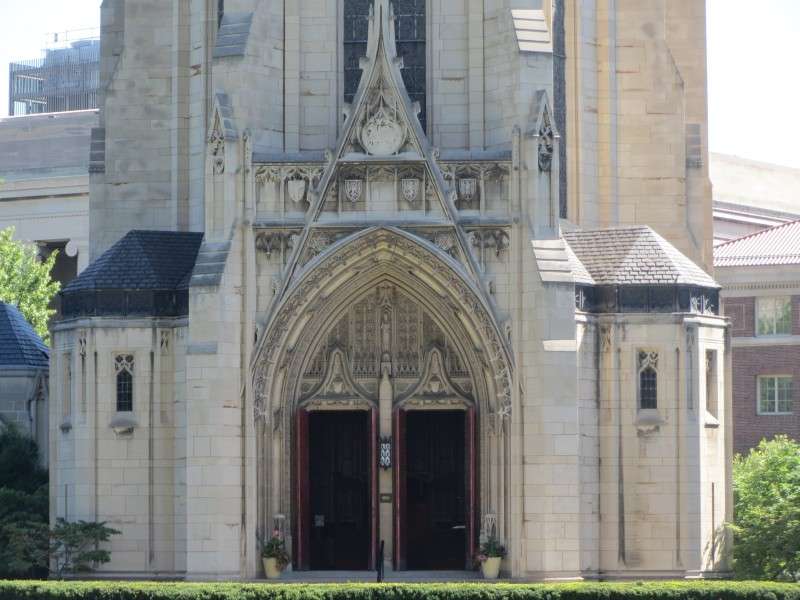
Heinz Chapel was built by Charles Klauder, who also designed the Cathedral of learning, and the Stephen Foster Memorial.
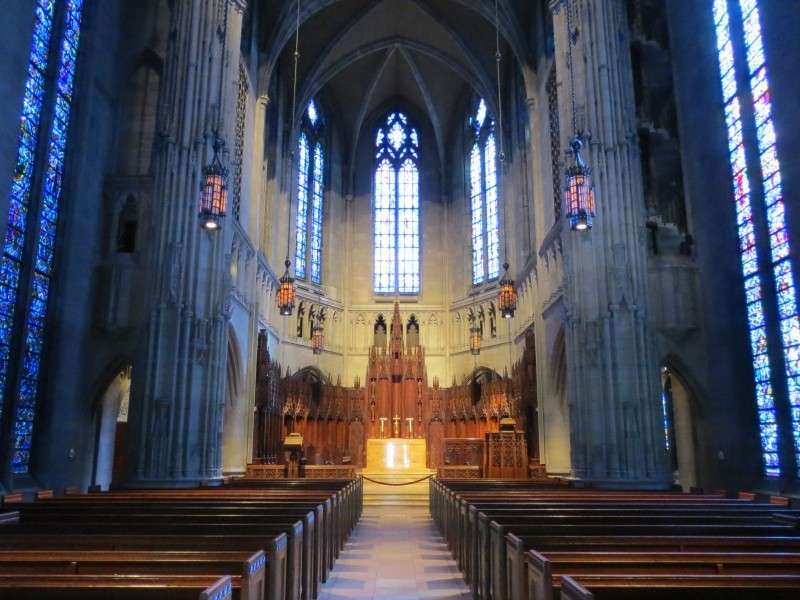
Klauder also did extensive work for schools in the state, such as the University of Pennsylvania, Penn State University, and Franklin & Marshall College.
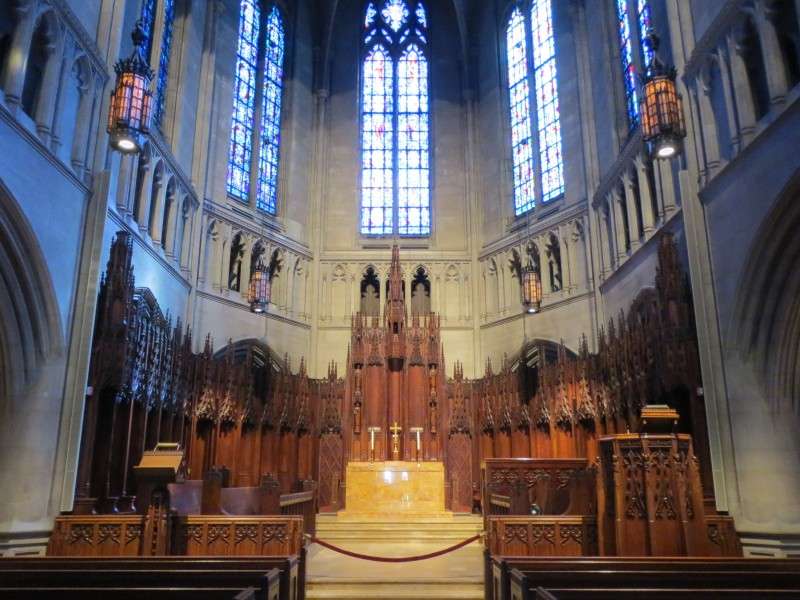
The stained glass windows in the chapel were designed by Charles Connick.

Connick also designed windows in St. Patrick's Cathedral in New York City, the Princeton University Chapel, and the American Church in Paris.
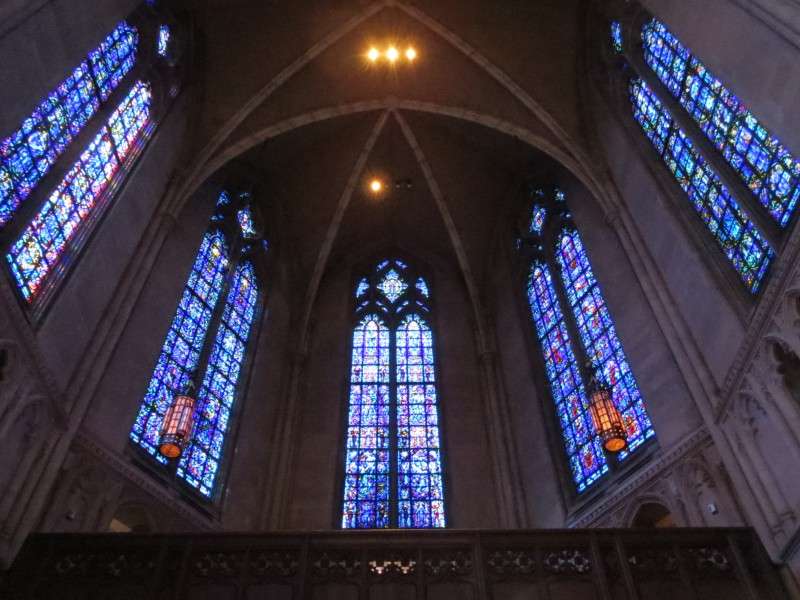
The Stephen Foster Memorial, on Forbes Avenue. The memorial was built in 1937.
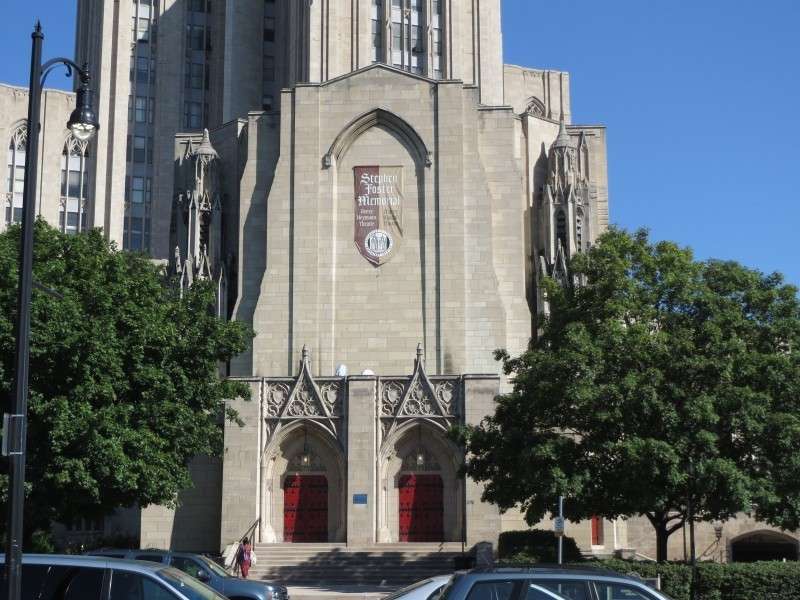
The Memorial houses the Stephen Foster Memorial Museum, Charity Randall Theatre, and Henry Heymann Theatre.
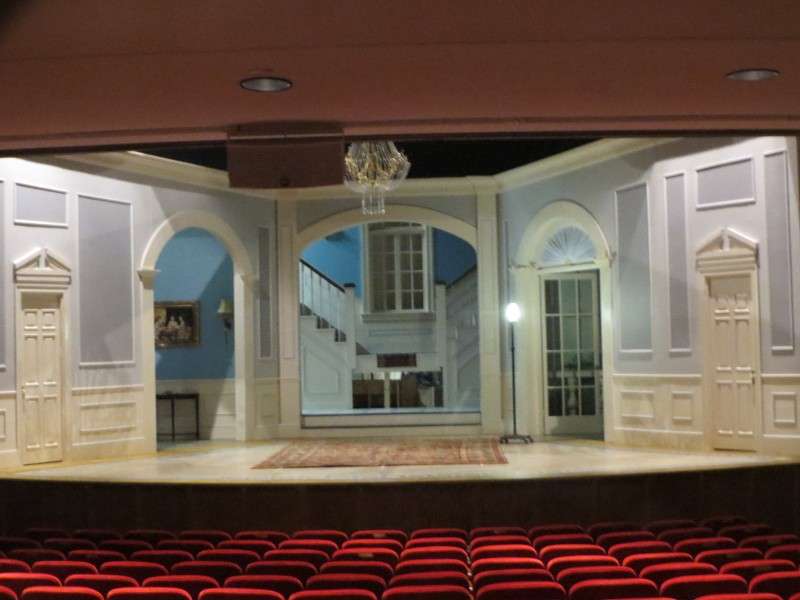
A log cabin, along Forbes Avenue, next to the Stephen Foster Memorial. The house, built in the 1820s or 1830s, was originally located about 50 miles northeast in Armstrong County. It was moved here in 1986 as part of the University of Pittsburgh's bicentennial celebration in 1987.
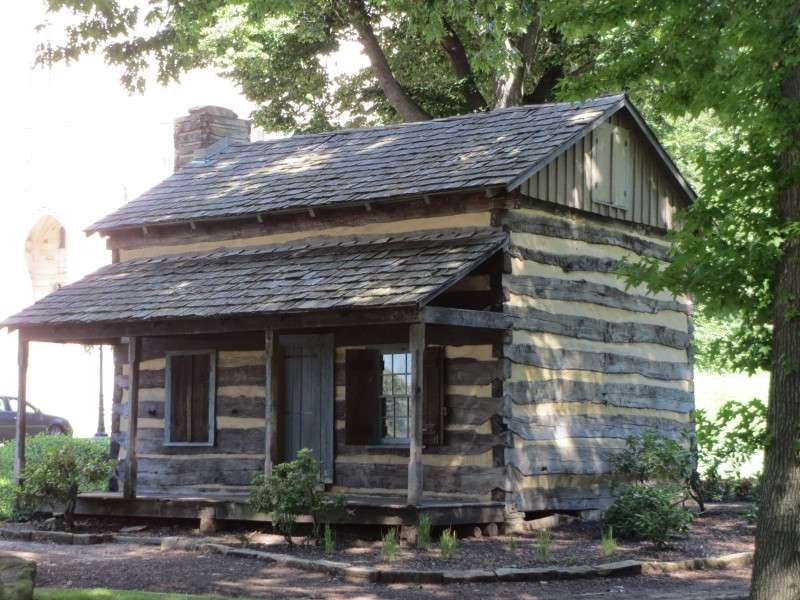
The old Schenley Hotel, on Bigelow Boulevard. The hotel was built in 1898.
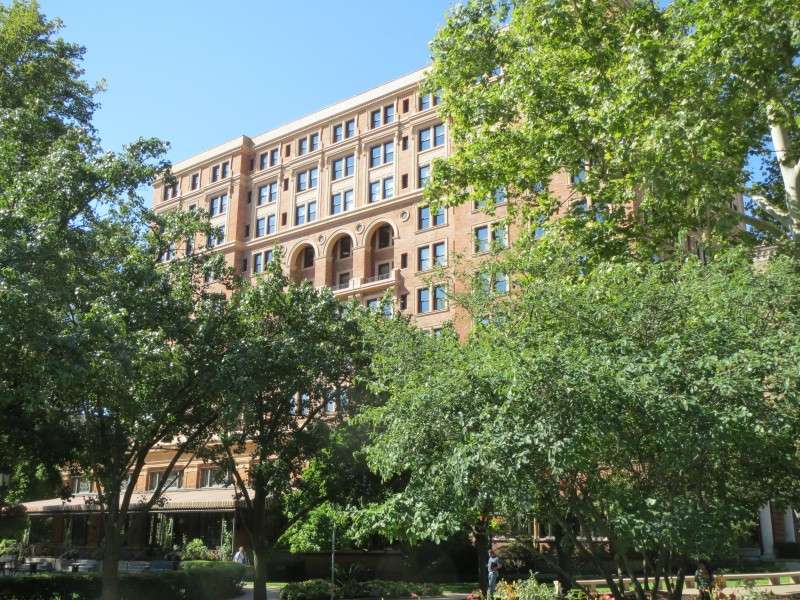
The old Schenley Hotel was Pittsburgh's premier hotel when completed, and was the hotel of choice for visiting away teams playing the Pirates. The hotel was bought by the University of Pittsburgh in 1956, and is now the William Pitt Student Union.

The Millenium Panther, at Bigelow Boulveard and Forbes Avenue, outside of the William Pitt Student Union. The statue was dedicated in 2001, and is one of 6 bronze statues of panthers in the Oakland neighborhood (with another outside Heinz Field in the North Side neighborhood).
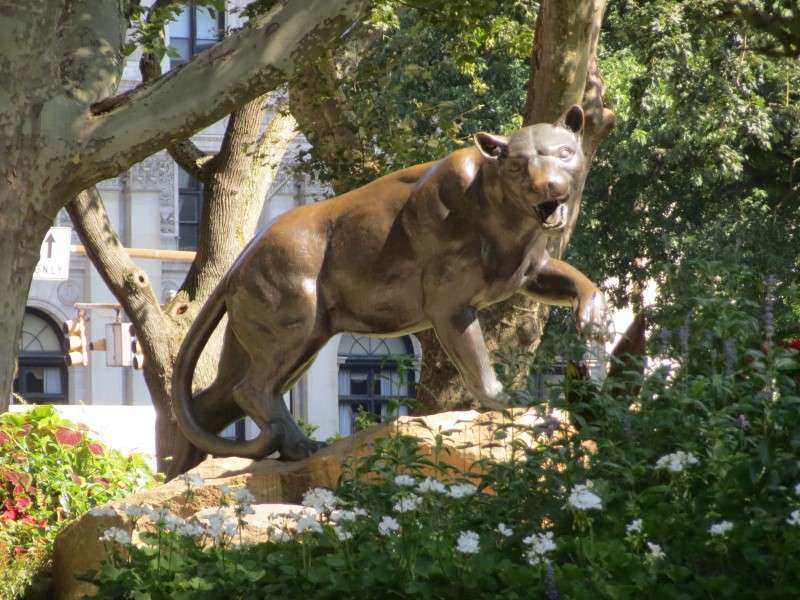
Hillman Library, on Schenley Drive. The library was built in 1968.

Wesley Posvar Hall, on Roberto Clemente Drive. The structure is the largest at the University of Pittsburgh by square footage, and hosts the School of Education, the College of Business Administration, and other departments. Posvar Hall was built in 1978, on the site of Forbes Field, which was demolished in 1975.
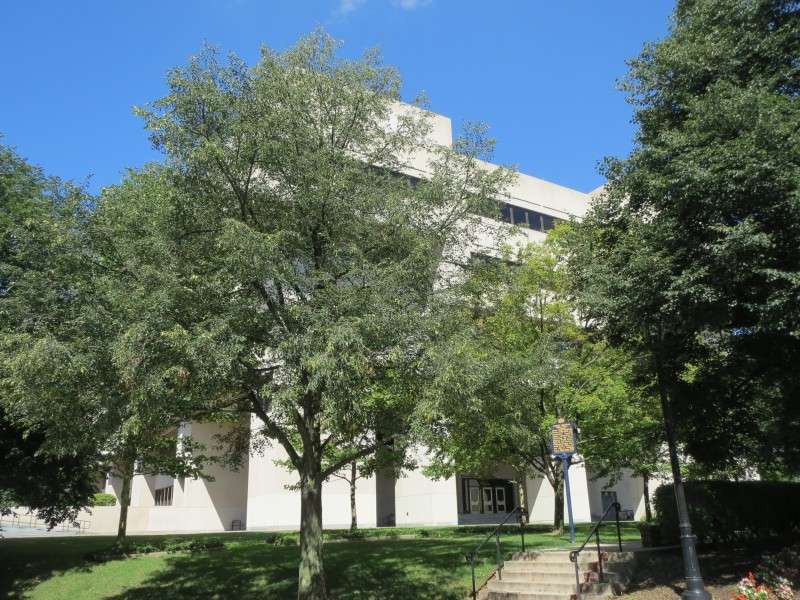
Looking up Forbes Avenue. Bruce Hall, originally the Schenley Apartments and built in 1924, is in the foreground, and now functions as a residence hall for the University of Pittsburgh. The Litchfield Towers are in the background.

The Mascaro Center for Sustainable Innovation, along O'Hara Street. The structure connects Benedum Hall to what was formerly the Engineering Auditorium, and was completed in 2009.

Petersen Events Center, on Terrace Street. The arena opened in 2002 and is the home to the University of Pittsburgh's basketball teams. Petersen Events Center was built on the site of Pitt Stadium, home to the school's football team.
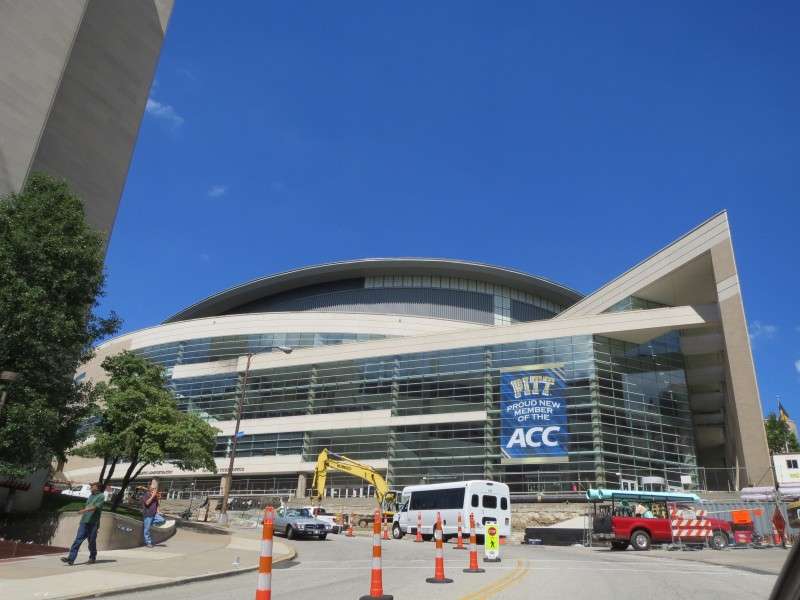
Upper Campus residence halls along Allequippa Street. Sutherland Hall is on the left, and Panther Hall is on the right. Sutherland Hall was built in 1992 and was the first major instance of student housing on the upper campus. Panther Hall was built in 2006.
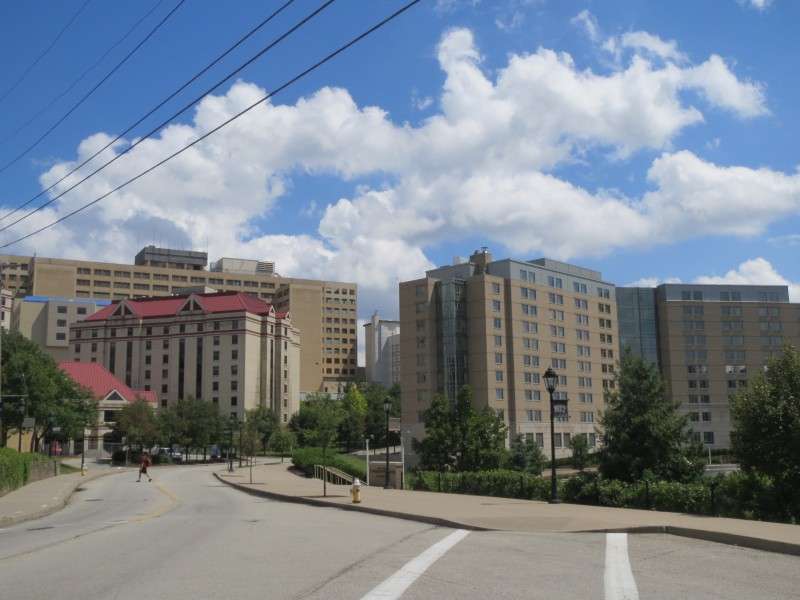
The Upper Campus provides views of the entire neighborhood, including view of the Cathedral of Learning.
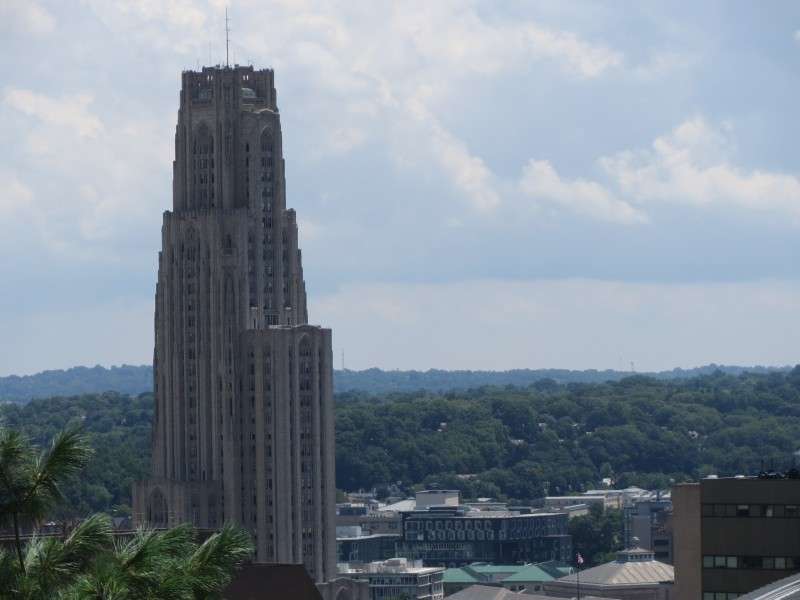
The Upper Campus also provides an encompassing view of Carnegie Mellon University, Oakland's other significant university.
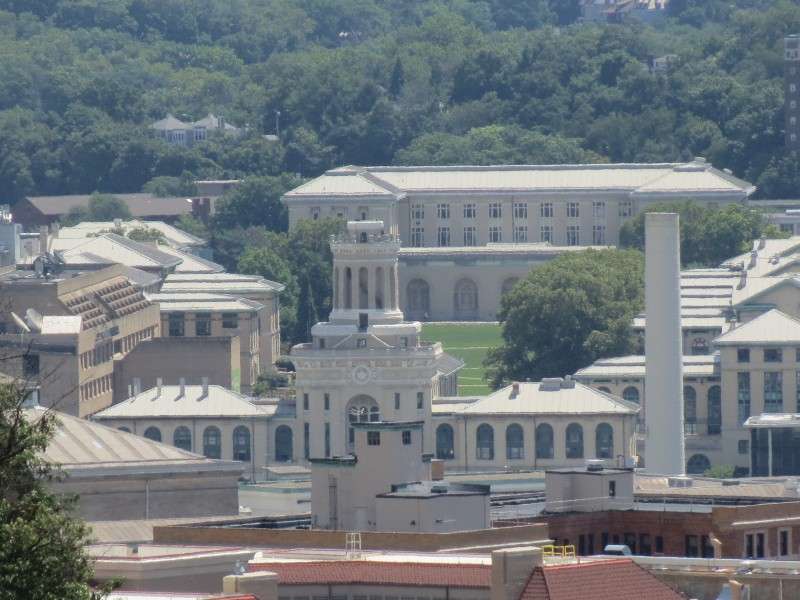
Carnegie Mellon University was conceived as Carnegie Technical Schools in 1900, and opened in 1905.
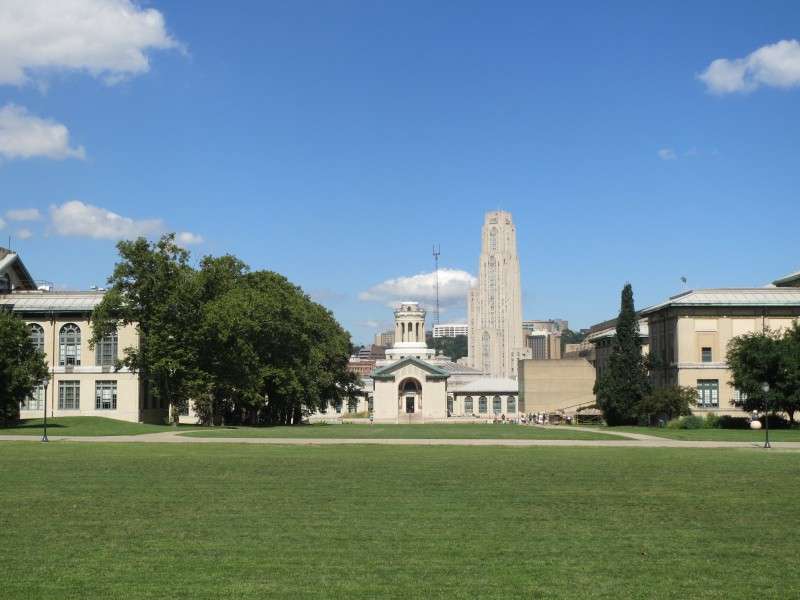
The school was renamed the Carnegie Institute of Technology in 1912, and became Carnegie Mellon University in 1968 when it merged with the Mellon Institute of Industrial Research.
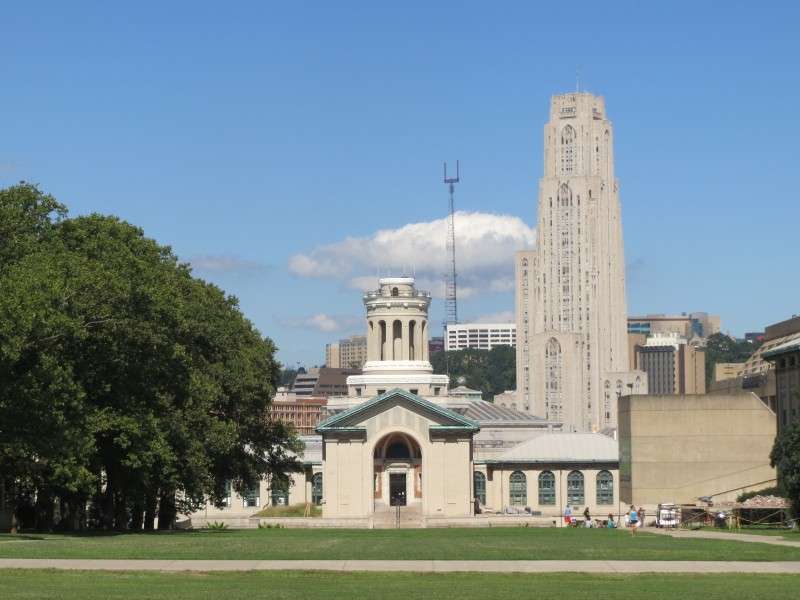
Hamerschlag Hall is Carnegie Mellon's landmark building on the west end of its pronounced axial quadrangle. The structure, with centers the technology buildings on the west, was built in 1913.

Doherty Hall, at Carnegie Mellon Univerrsity. The structure was built in 1908.
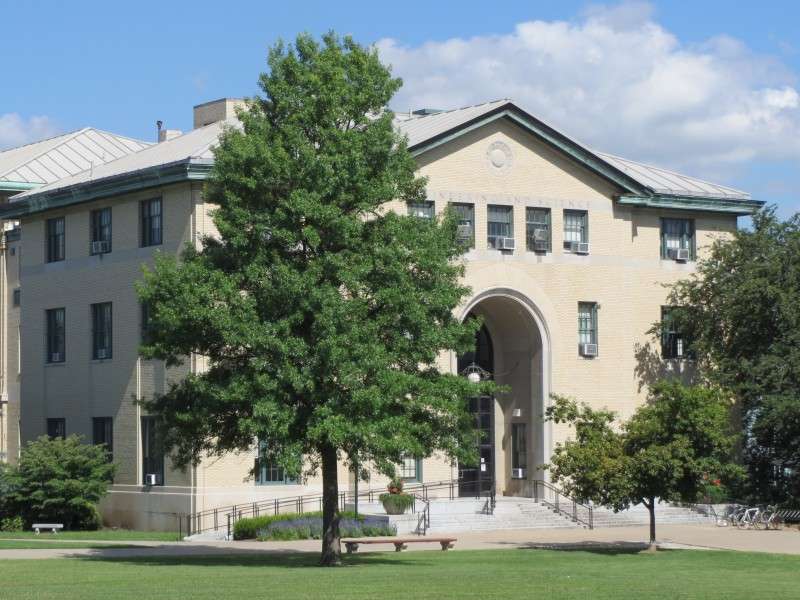
Baker Hall, at Carnegie Mellon University. The structure was built in 1914.

Carnegie Mellon's College of Fine Arts. The building was completed in 1916 and is the centerpiece of the buildings on the east side of the axis, which were for the arts.
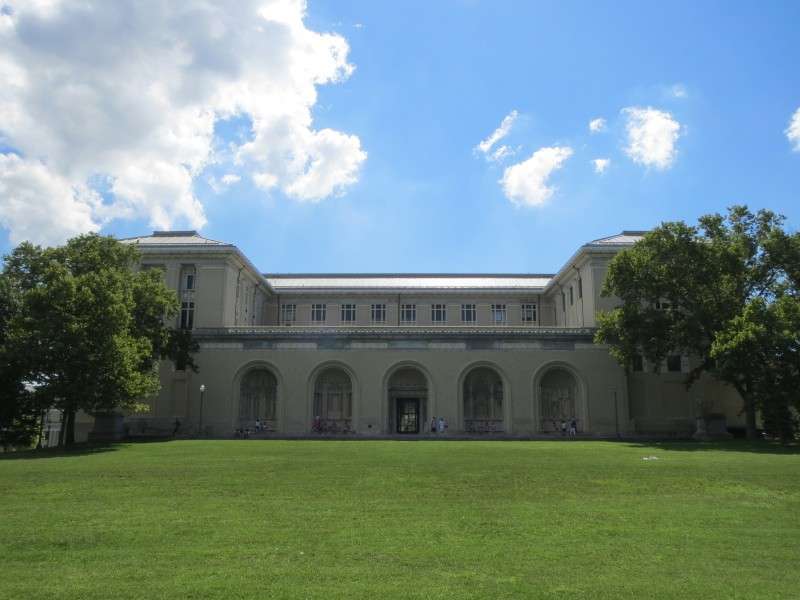
Looking down Tech Street at Margaret Morrison Carnegie Hall. The structure was built in 1914, and was a tribute to Carnegie's mother. Margaret Morrison Carnegie Hall was the women's college for Carnegie Mellon University.
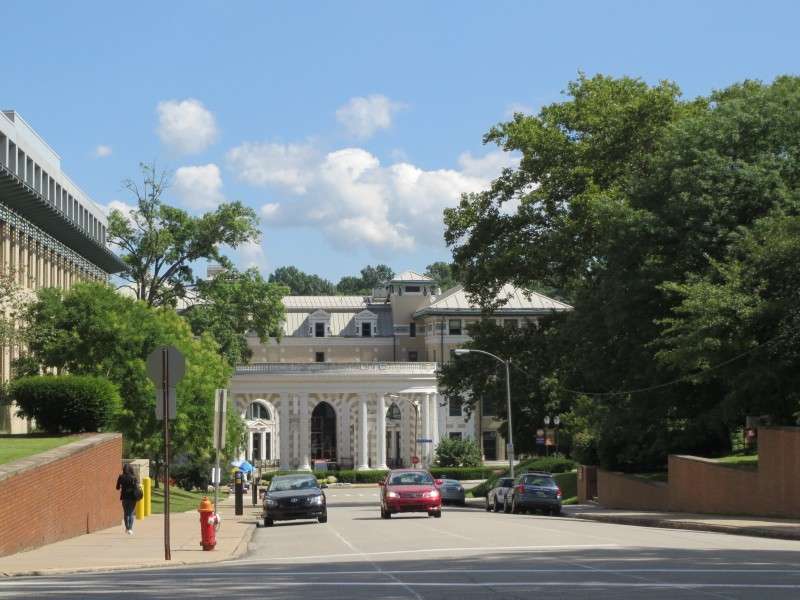
Carnegie Mellon's Gates Center for Computer Science. The structure was built in 2009.
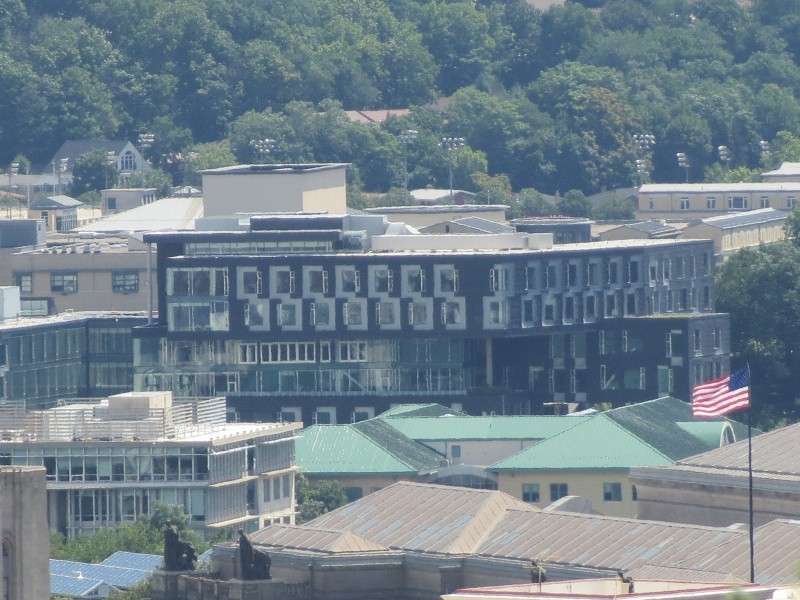
Besides the universities, Oakland is also known for its cultural venues. The first cultural institution in the neighborhood was the Carnegie Library of Pittsburgh, on Forbes Avenue. The library was built in 1895, and is the original portion of the building that now includes the Carnegie Museums.
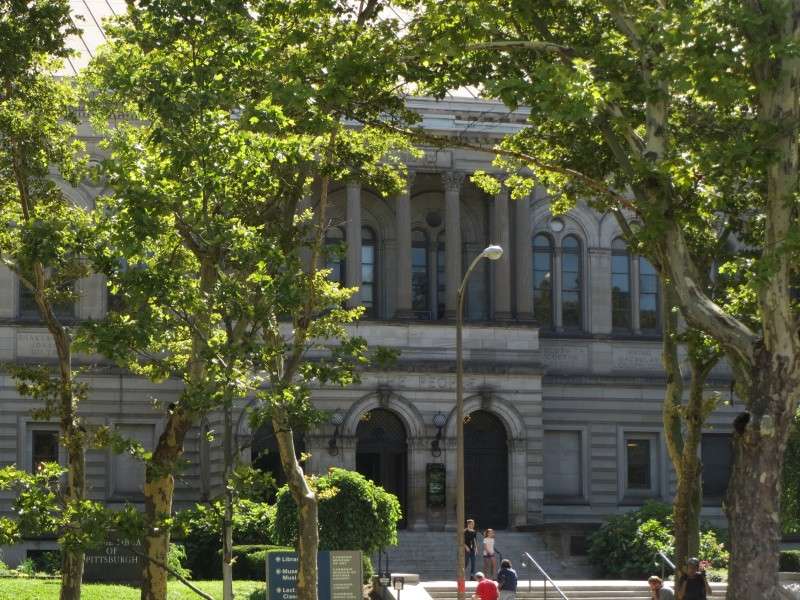
The Carnegie Museum of Natural History, on Forbes Avenue.

The Carnegie Museum was built in 1907 and connected to the library. The museum houses the third-largest collection of mounted and displayed dinosaurs in the United States.
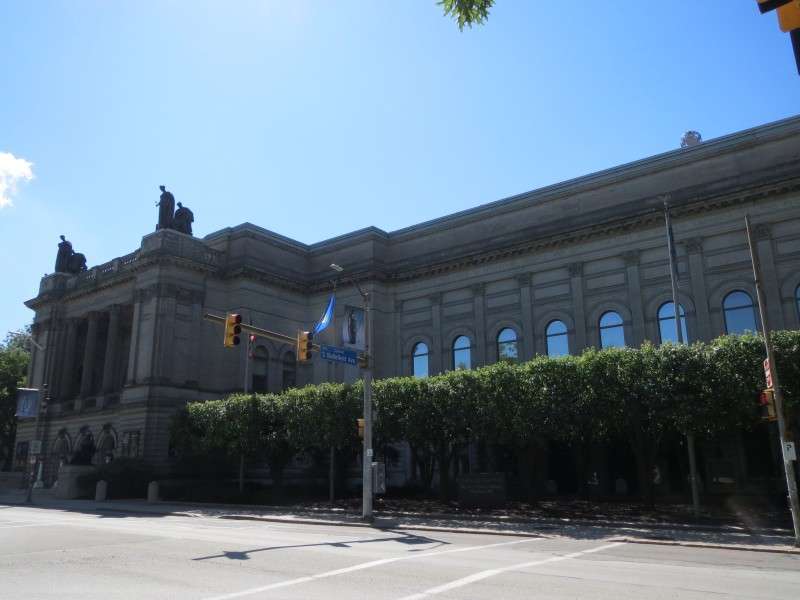
The Stephen Foster statue, near the Carnegie Museum of Natural History, on Forbes Avenue. The statue of the Pittsburgh songwriter was dedicated in 1900.
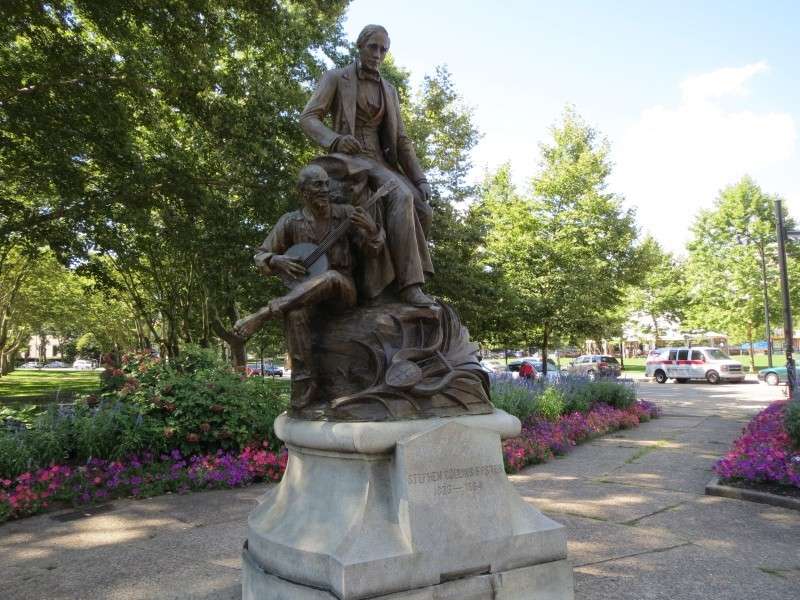
The Soldiers' and Sailors' National Military Museum and Memorial Hall, on Fifth Avenue. The memorial was originally the Allegheny County Soldiers' and Sailors' Memorial, and was built in 1910 as a tribute to Civil War veterans.
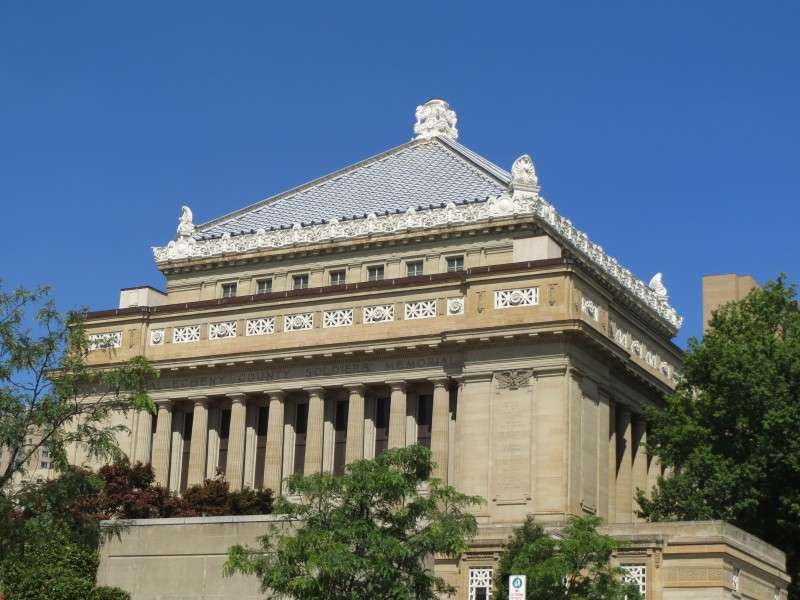
The hall is an adaptation of the Mausoleum of Halicarnassus, one of the Seven Ancient Wonders of the World.
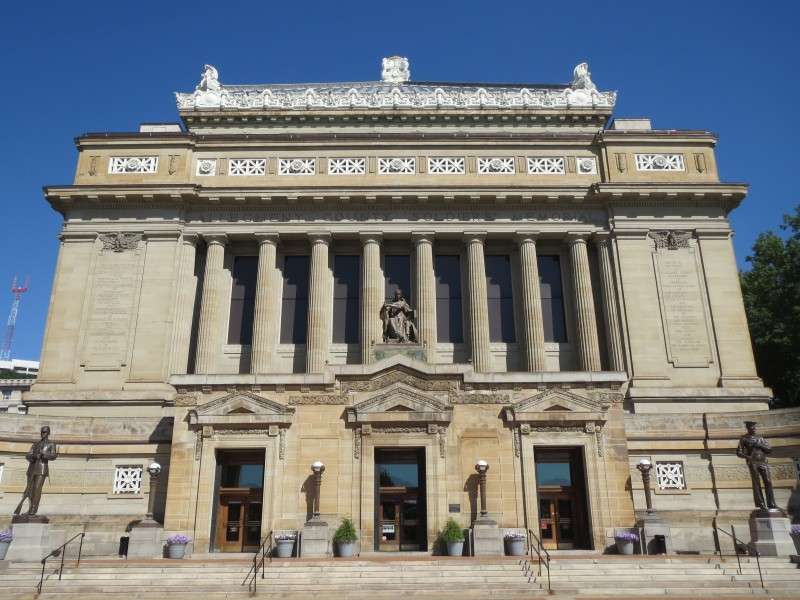
Bellefield Presbyterian Church, on Fifth Avenue. The church was built in 1899.
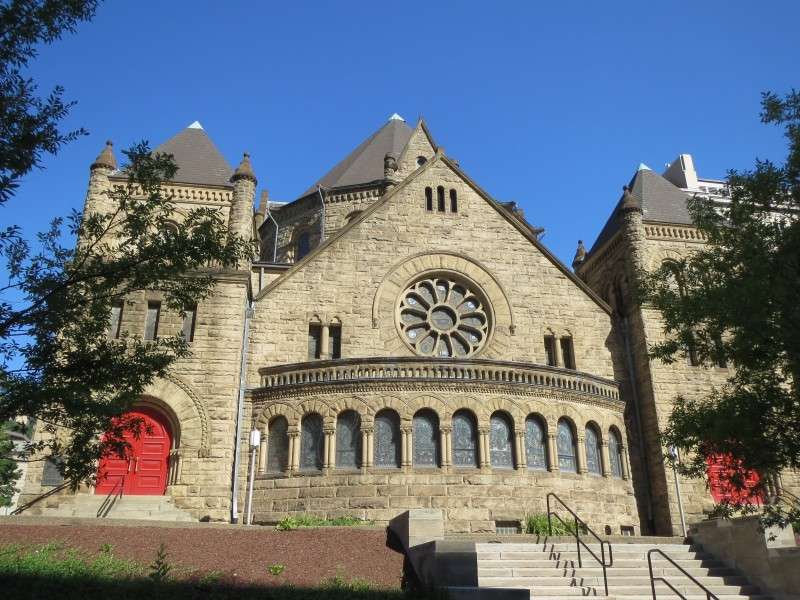
The Twentieth Century Club, on Bigelow Boulevard. The club was built in 1930, and recounts Michelangelo's Palazzo del Senatore in Rome.
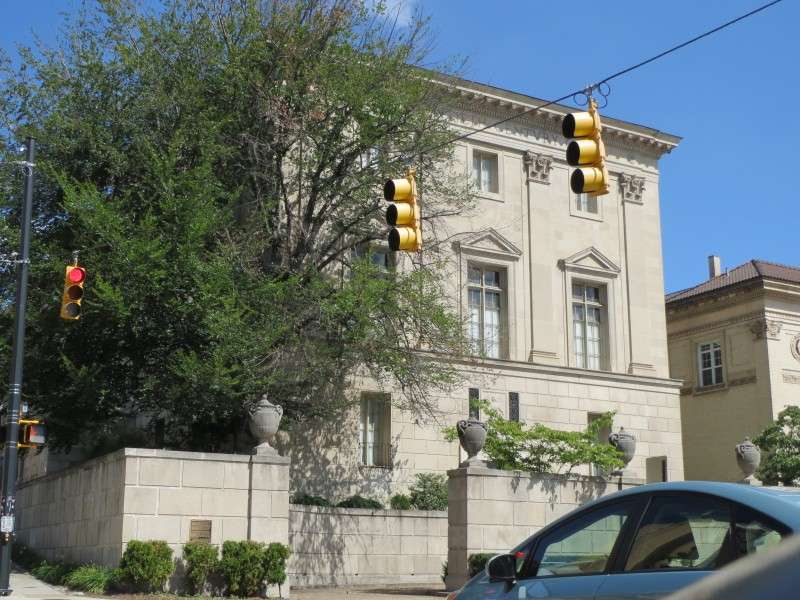
The Pittsburgh Athletic Association, on 5th Avenue. The Venetian Renaissance building was constructed in 1911.
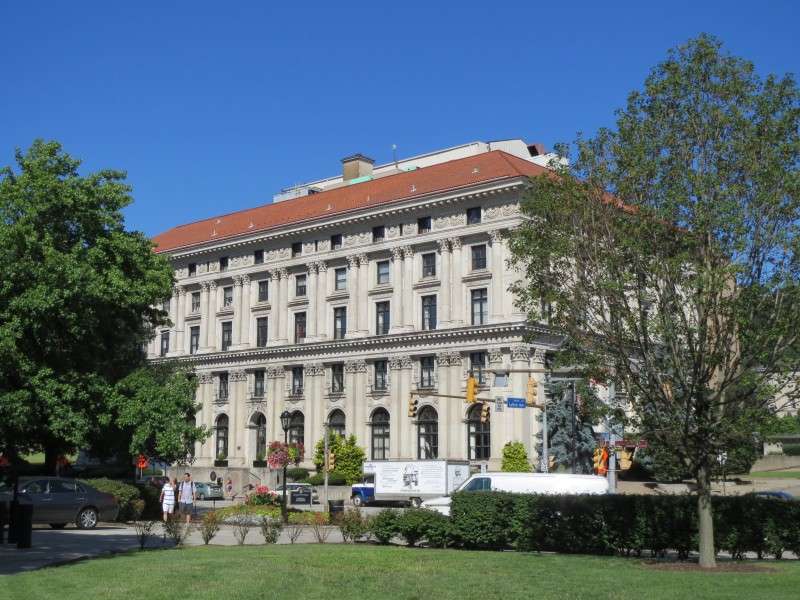
Alumni Hall, on Fifth Avenue. The structure was built in 1914 and was originally a Masonic temple. It is now part of the University of Pittsburgh.
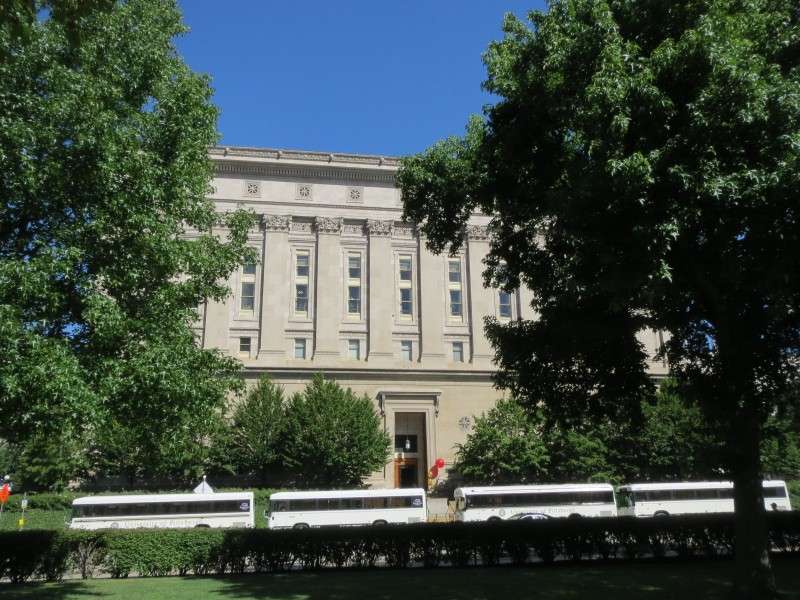
St. Paul Cathedral, on 5th Avenue. The cathedral was built in 1906, and is the seat of the Roman Catholic Diocese of Pittsburgh. The church's spries were designed to mimic those of Cologne Cathedral.
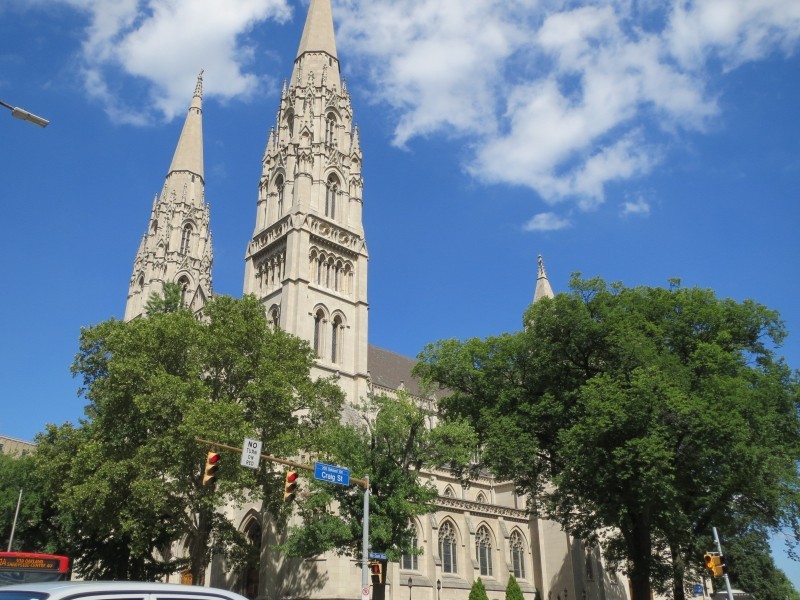
St. Nicholas Greek Orthodox Cathedral, on Dithridge Street. The church was built in 1904 as the First Congregational Church. It is now the seat of the Greek Orthodox Metropolis of Pittsburgh.
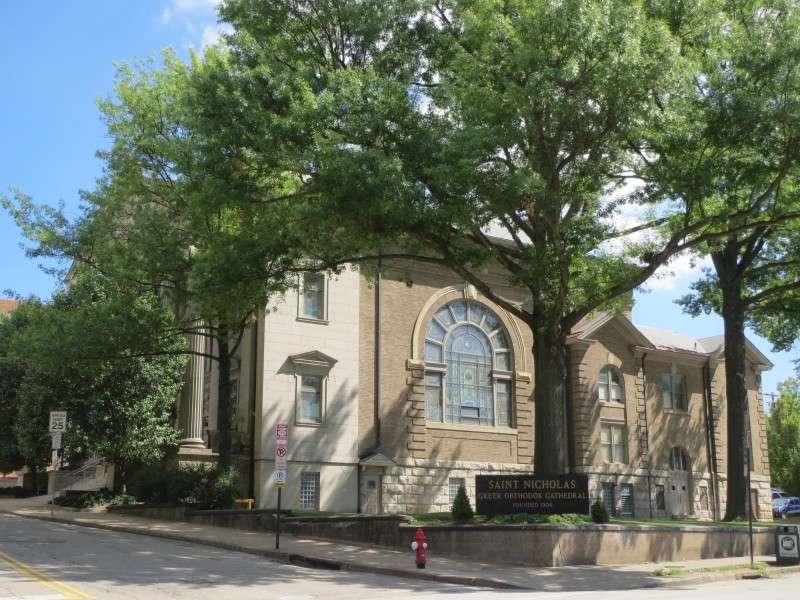
The Community of Reconciliation Building, at Fifth & Bellefield Avenues. The belltower from the 1889 Bellefield Presbyterian Church is on the corner.
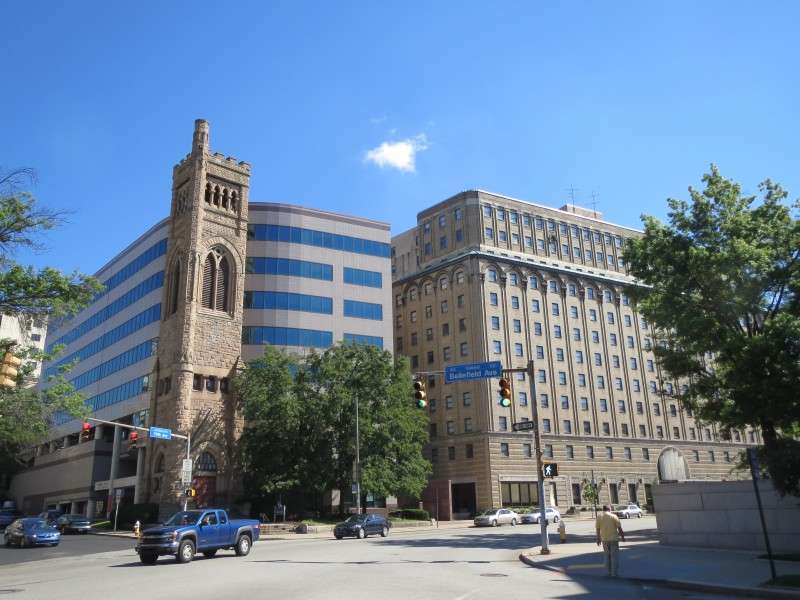
Carnegie Mellon Research Institute, on Bellefield Avenue. The structure was originally the Mellon Institute for Industrial Research, and was built in 1937.

The Institute was one of the first centers for applied research in the natural sciences and industry.

Bellefield Hall, on Bellefield Avenue. The structure was built in 1924 as the Young Men and Women's Hebrew Association.

The Pittsburgh Board of Education, on Bellefield Avenue.
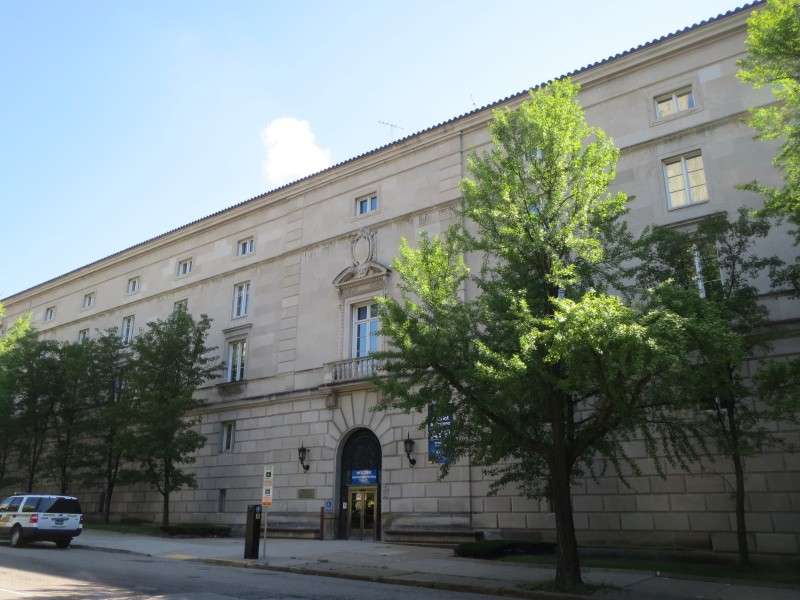
The Henry Clay Frick Fine Arts Building, on Schenley Drive. The building, used by the University of Pittsburgh, was financed in 1925, but built in 1965. The Mary Schenley Memorial Fountain, "A Song to Nature," sits in front, and was dedicated in 1918.

Along Roberto Clemente Drive is part of the outfield wall of the former Forbes Field. A section from center field to right field is preserved in a green space.
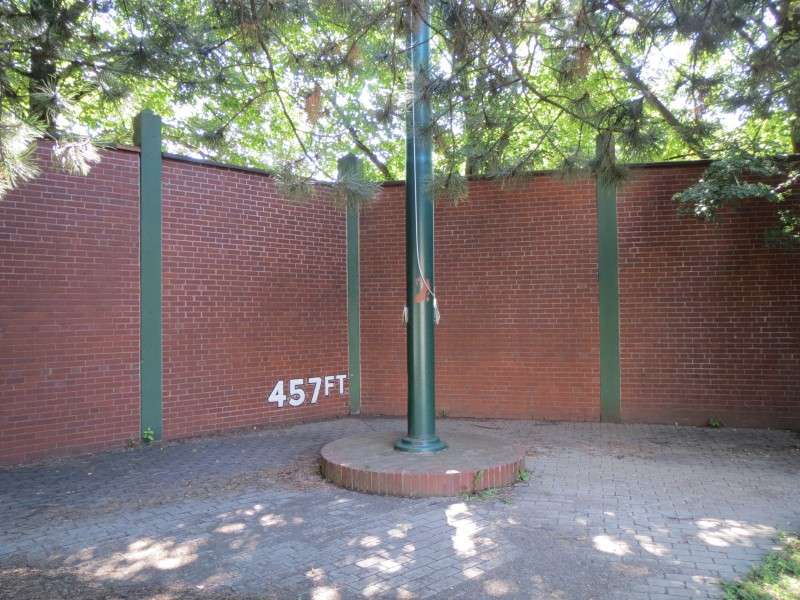
Forbes Field was the home of the Pittsburgh Pirates from 1909 to 1970.
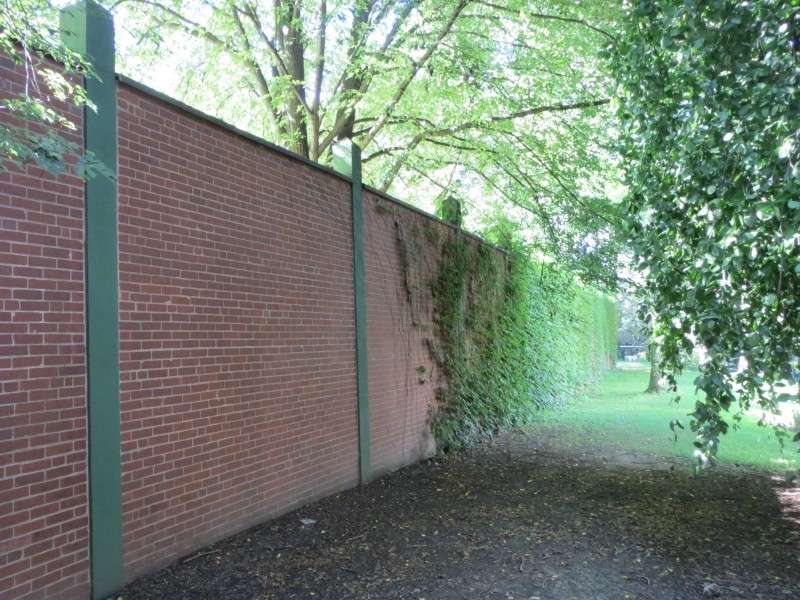
Forbes Field was a three-tiered stadium built of steel and concrete, the first of its kind in the country.
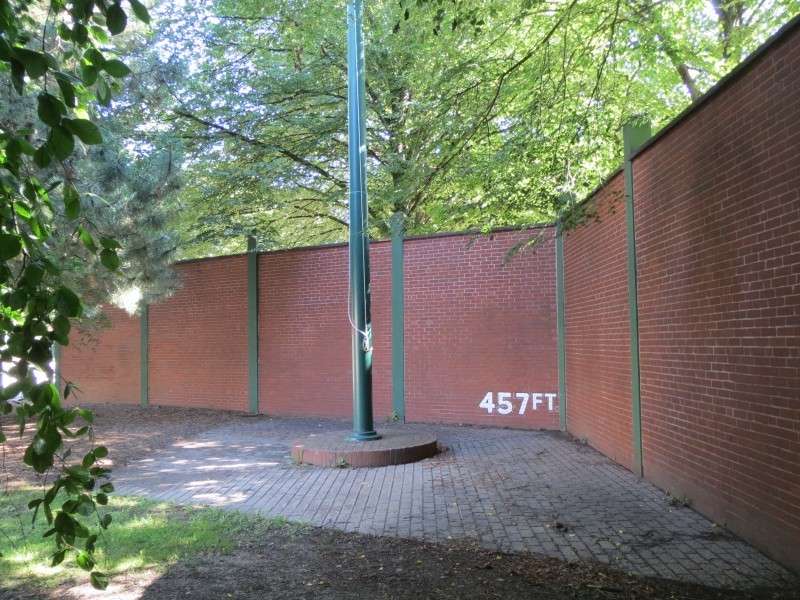
The stadium was demolished in 1971 after the Pirates moved to Three Rivers Stadium.
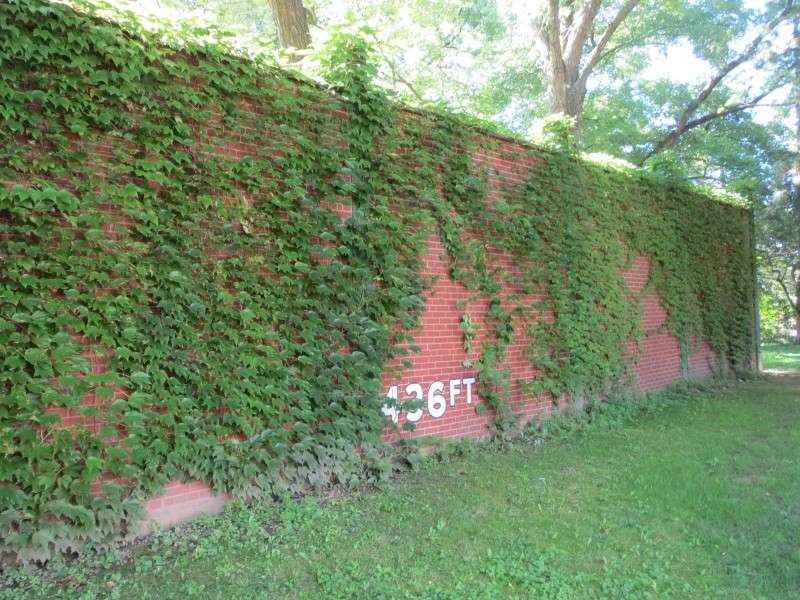
Pirates owner Barney Dreyfuss said that he hated cheap home runs and wanted none in his new stadium, so when Forbes Field was built, left field was 360 feet from home plate, center field 448 feet from home plate, and right field 376 feet from home plate. The deepest part of the outfield was 462 feet from home plate.
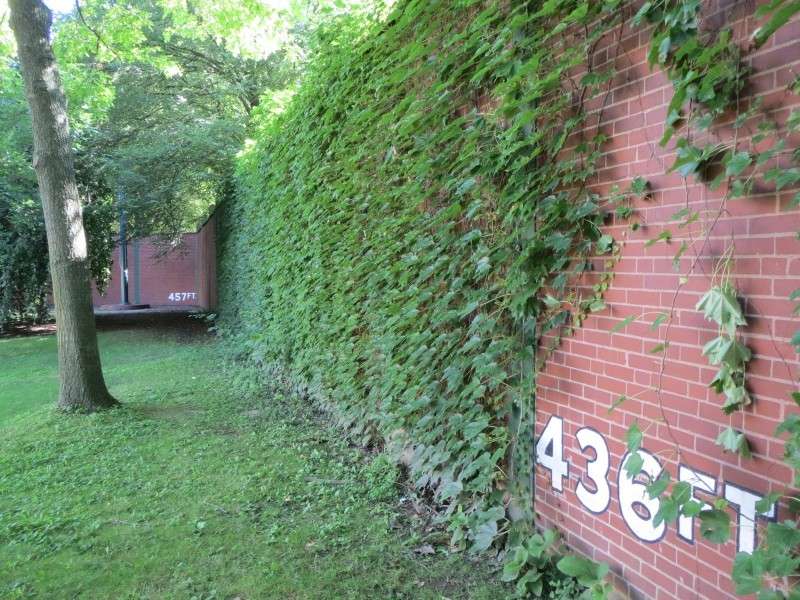
When Forbes Field closed on June 28 of that year, it was the second-oldest stadium still in use in Major League Baseball, opening less than 3 months after Shibe Park in Philadelphia.
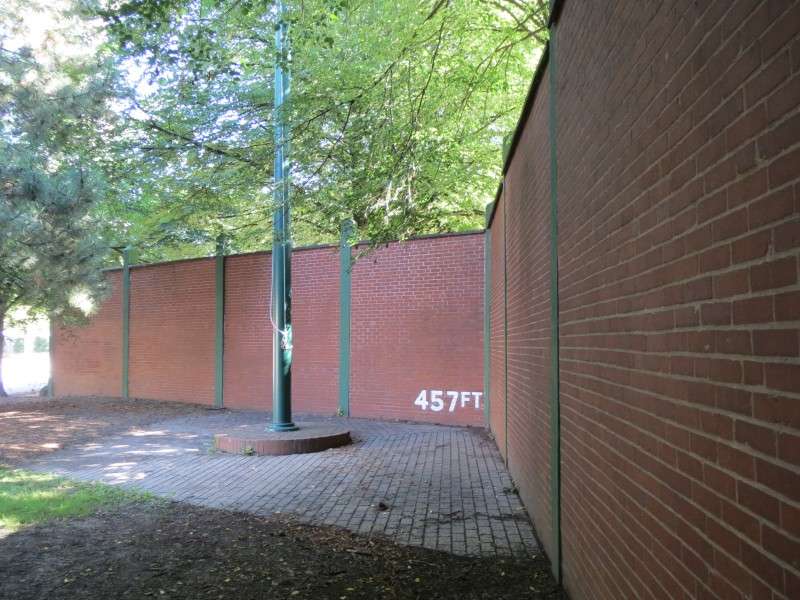
Forbes Field is notable for having a flag pole in center field that was in play.

A plaque in the sidewalk across the street marks the spot where Bill Mazeroski's home run in the 1960 World Series gave the Pirates the championship.
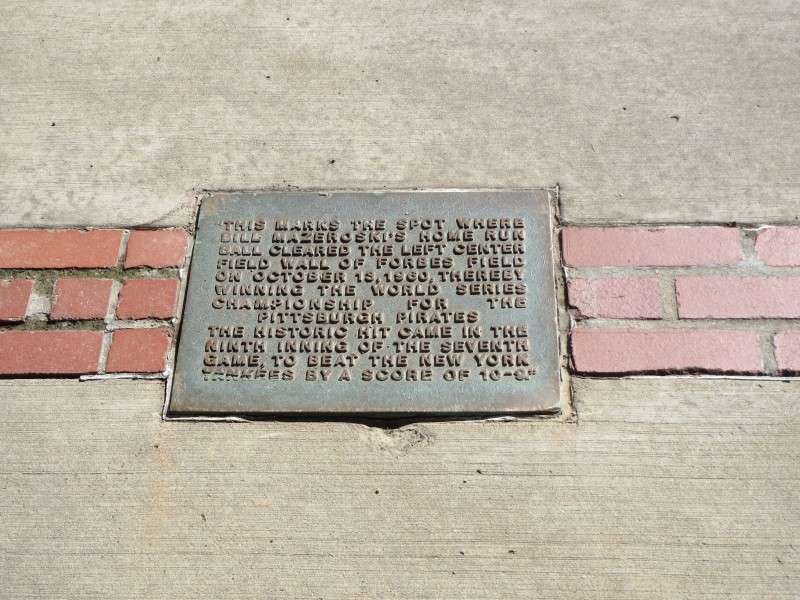
A line of bricks in the walkway indicate where the rest of the outfield wall stood. These bricks cross Roberto Clemente Drive, and are in front of Wesley W. Posvar Hall.
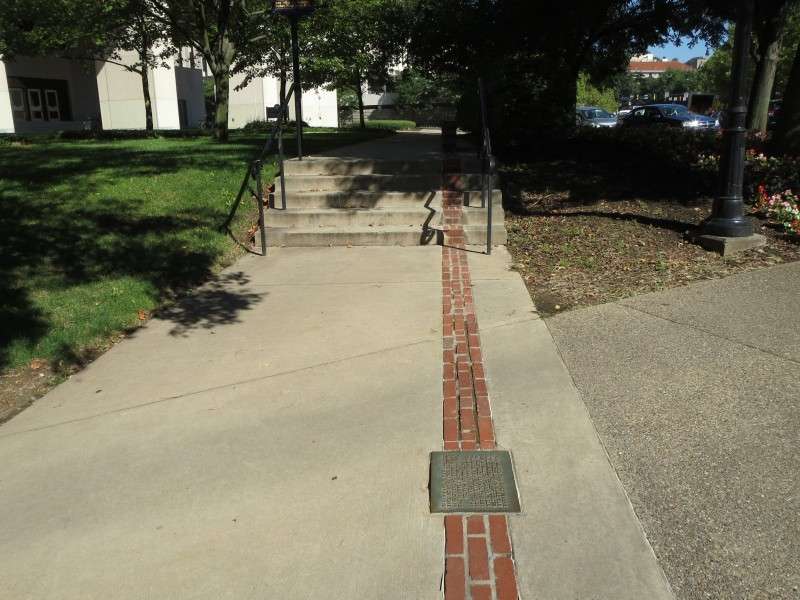
Phipps Conservatory, on Schenley Park Drive. The conservatory and botanical gardens were built in 1893 and named for benefactor Henry Phipps, a partner of Andrew Carnegie.
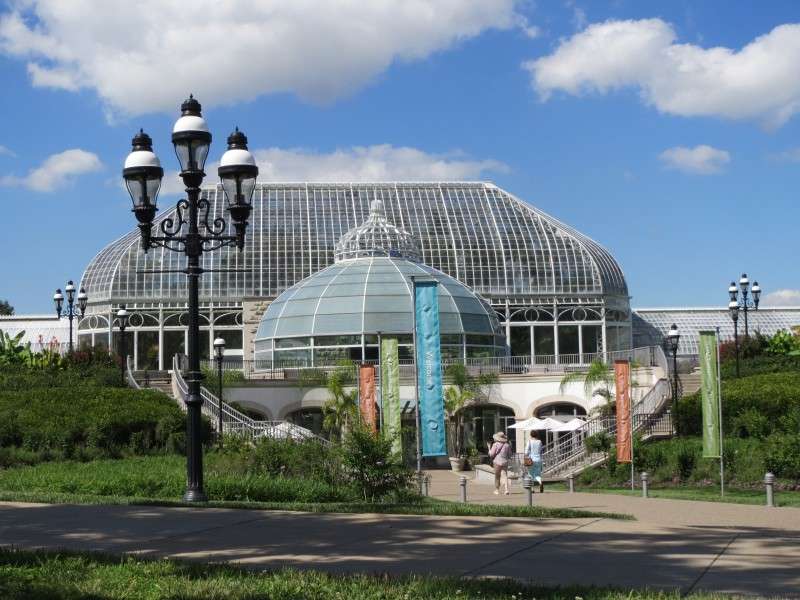
Phipps Hall of Botany, adjacent to the Phipps Conservatory and along Panther Hollow Road. The hall was built in 1901.

The Robert Burns statue, on Panther Hollow Road by Phipps Conservatory. The statue was dedicated in 1914.
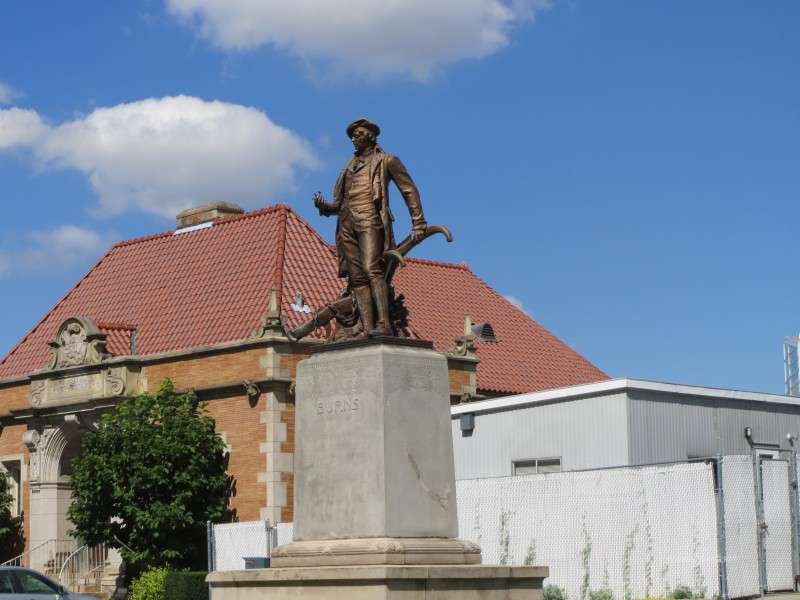
The Edward Manning Bigelow statue, on Schenley Park Drive. The statue was dedicated in 1895. Bigelow helped secure the land for Schenley Park.

The Christopher Columbus statue, on Schenley Park Drive by the Phipps Conservatory. The statue was dedicated in 1958.
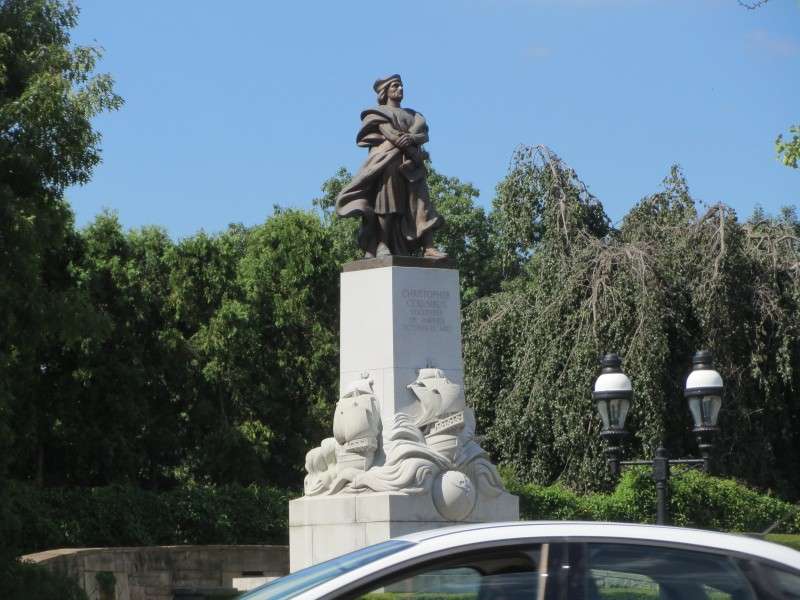
UPMC Presbyterian Hospital, on Victoria Street. The hospital was built in 1938.
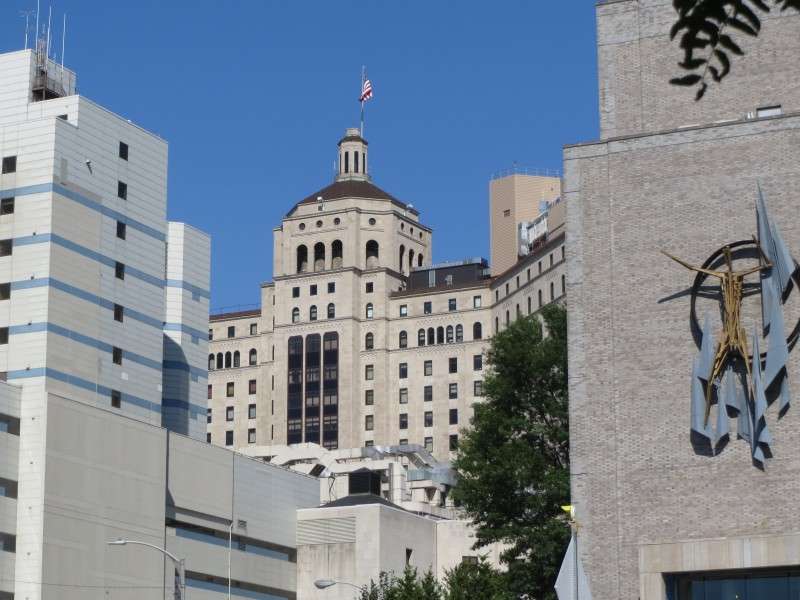
The Iroquois Building, on Forbes Avenue. The structure was built in 1903, and was originally luxury apartments. It now houses shops, with offices for the University of Pittsburgh Medical Center upstairs.
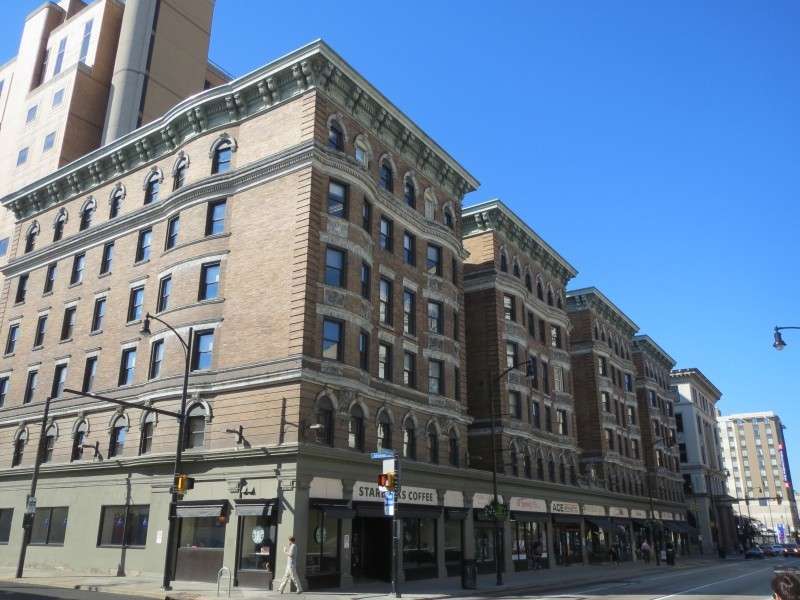
Buildings on Forbes Avenue.
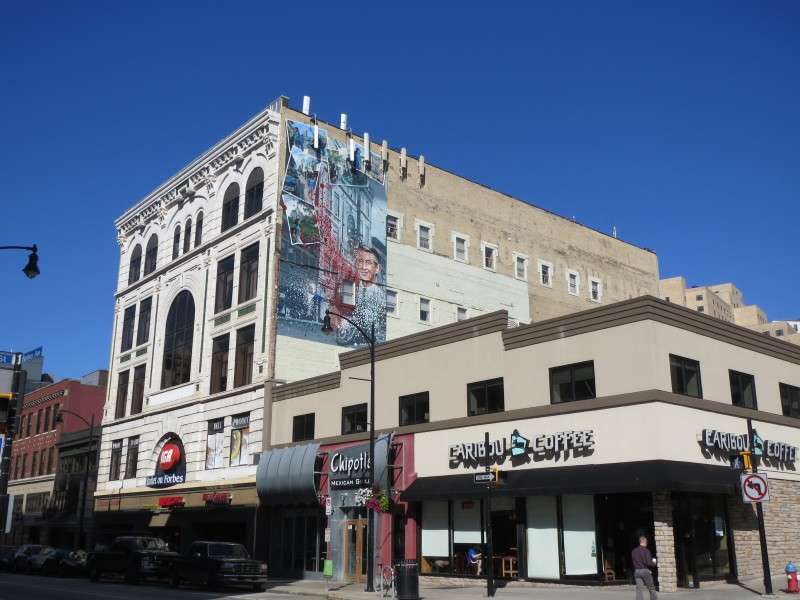
Primanti Brothers, on Forbes Avenue. Pittsburgh's most famous eatery does not call Oakland its true home. The original location is on the other side of the hill from Oakland, in the Strip District.

Police Patrol Station No. 4, on Forbes Avenue. The station was built in the 1890s, and was a theater in the 1970s and 1980s.
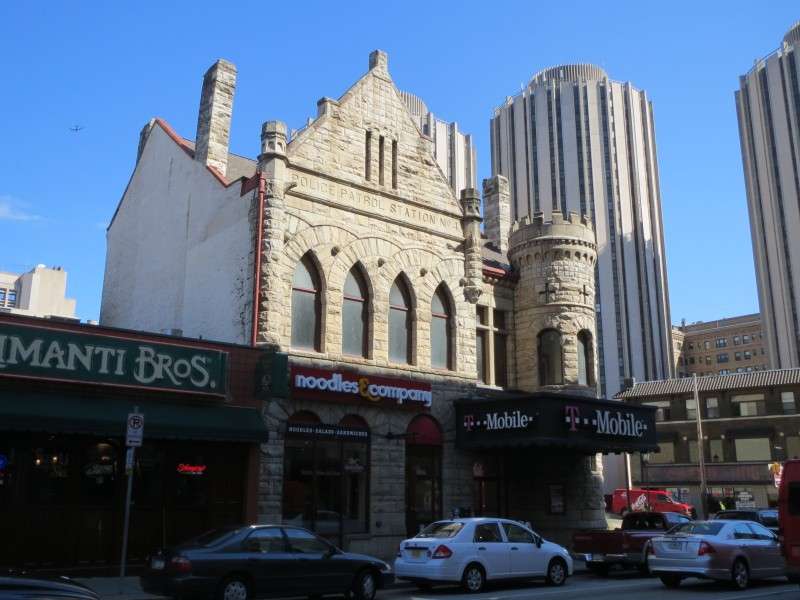
Buildings along Forbes Avenue. Two of the three circular Litchfield Towers, built in 1963, are on the left.
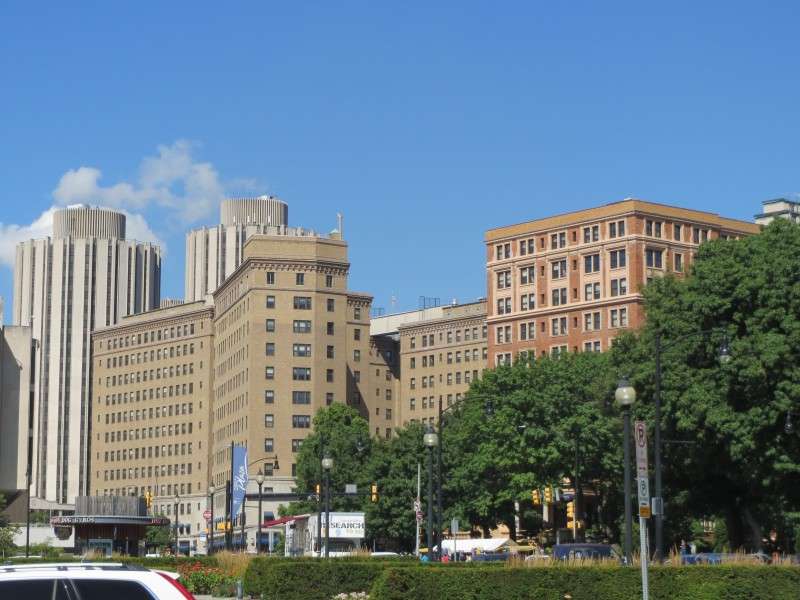
Looking down Dunseith Street from Allequippa Street. At the end of the street are buildings of Carlow University, including McCauley Hall.
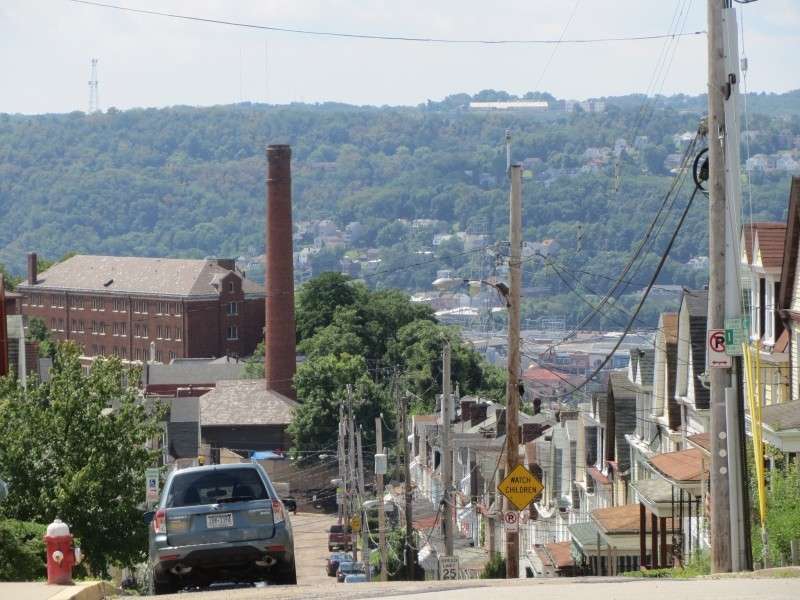
Houses on Atwood Street.

The Park Plaza Apartments, on Craig Street. The highrise was built in 1957 on the site of Duquesne Gardens. Duquesne Gardens was built in 1890 and became an ice rink in 1895. It is notable for being the site of the first professional hockey game, with paid players, and of the first use of glass with the boards.

An apartment building on Craig Street.
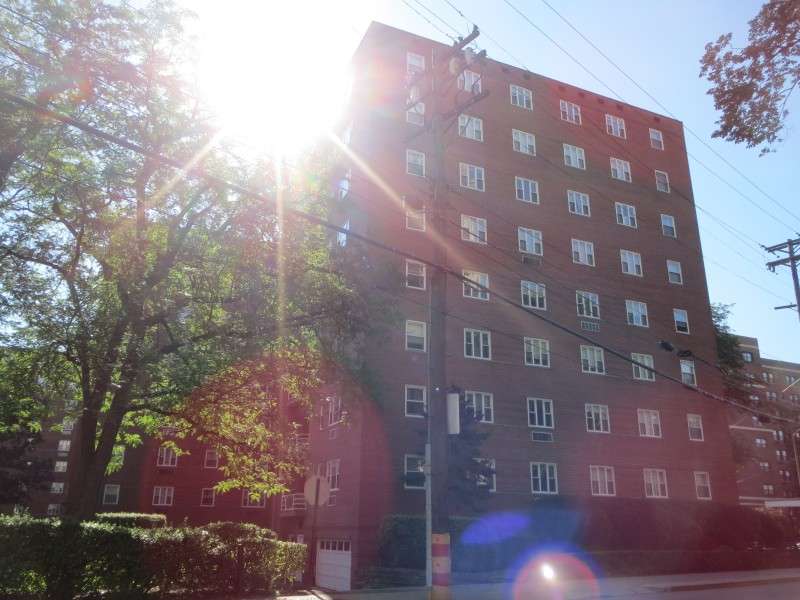
First Baptist Church, on Bellefield Avenue. The church was built in 1910.
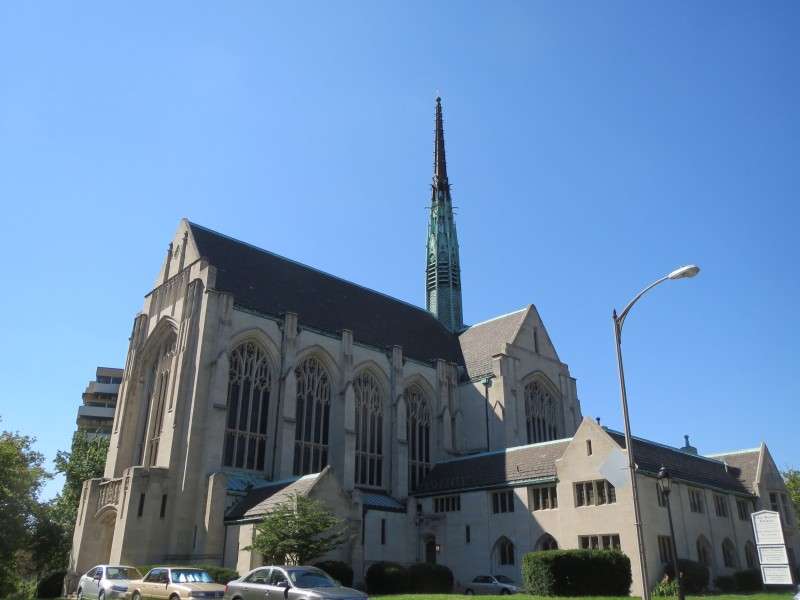
A house on Bayard Street.
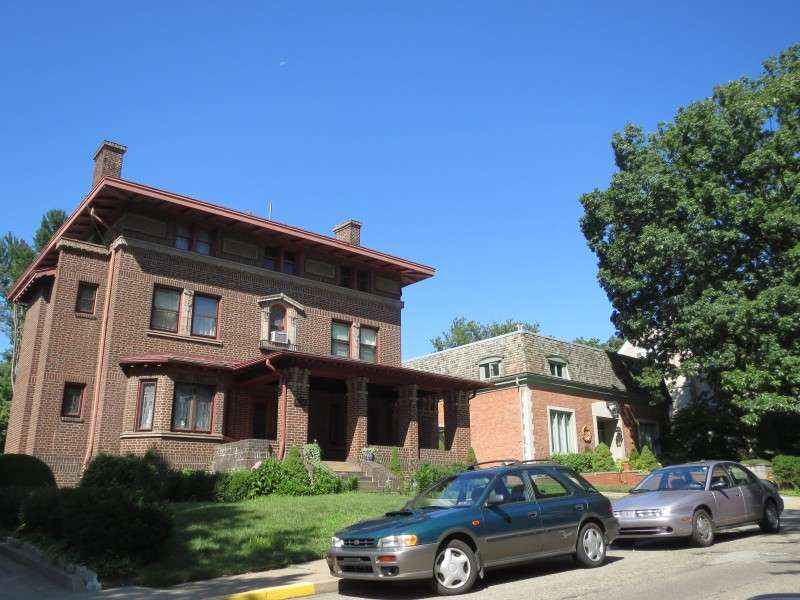
Houses on Bigelow Boulevard.
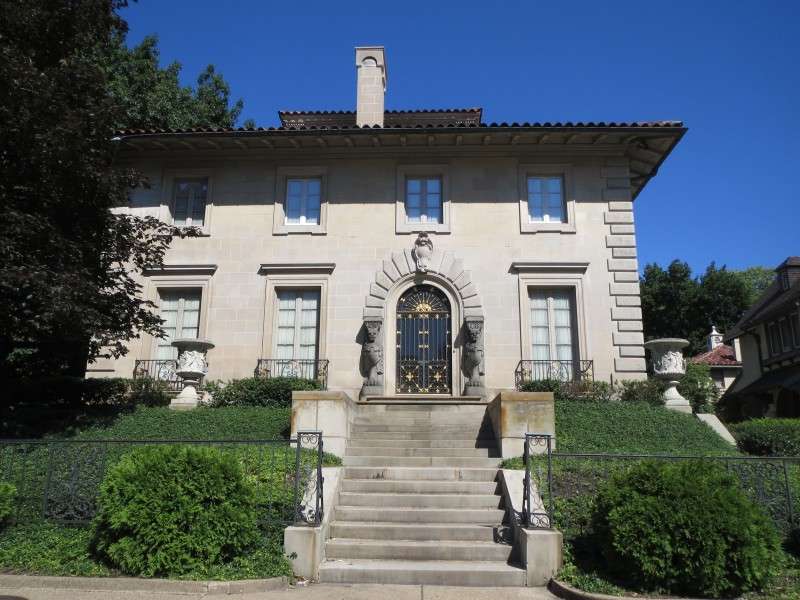
A house on Bigelow Boulevard.
